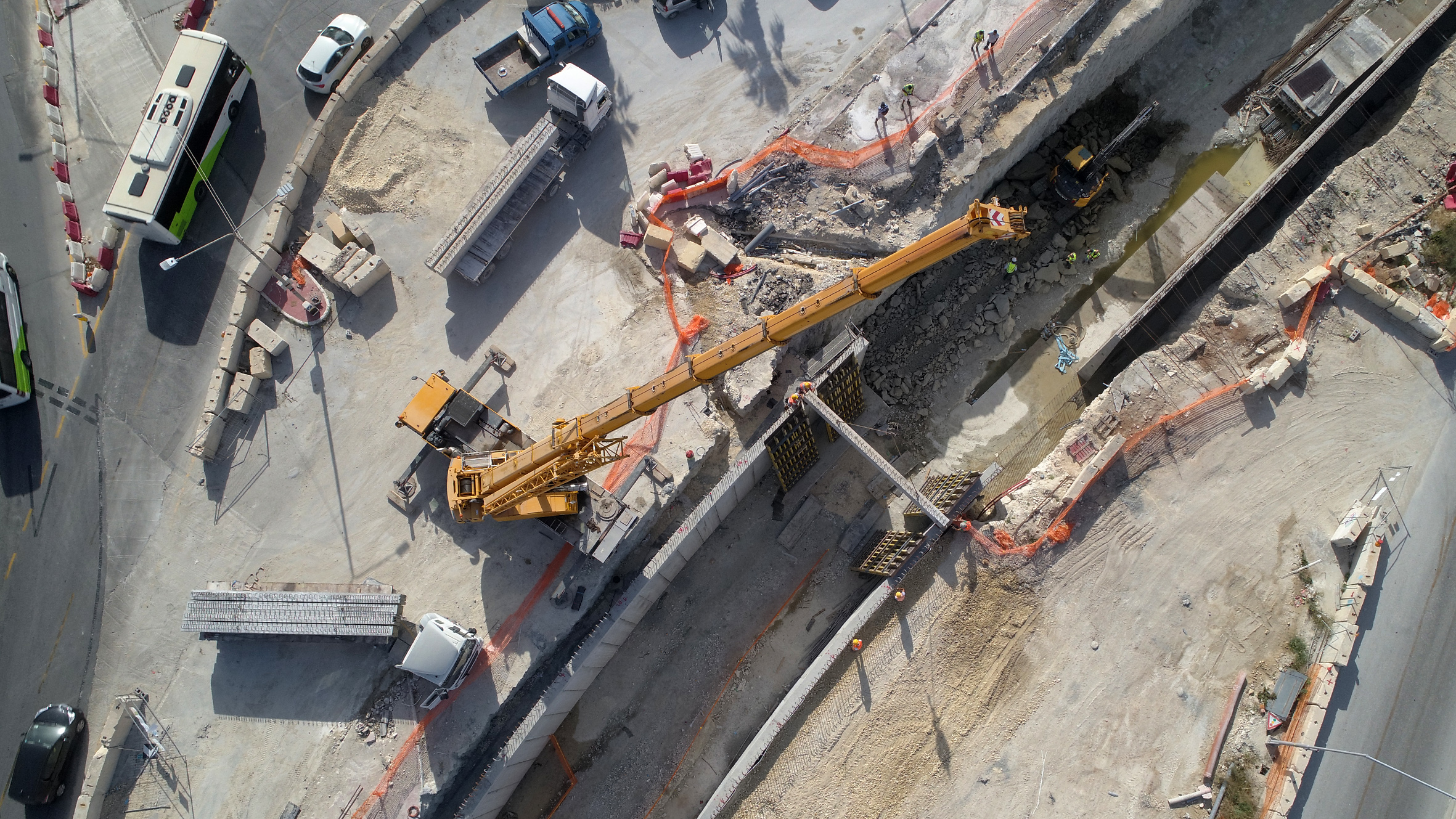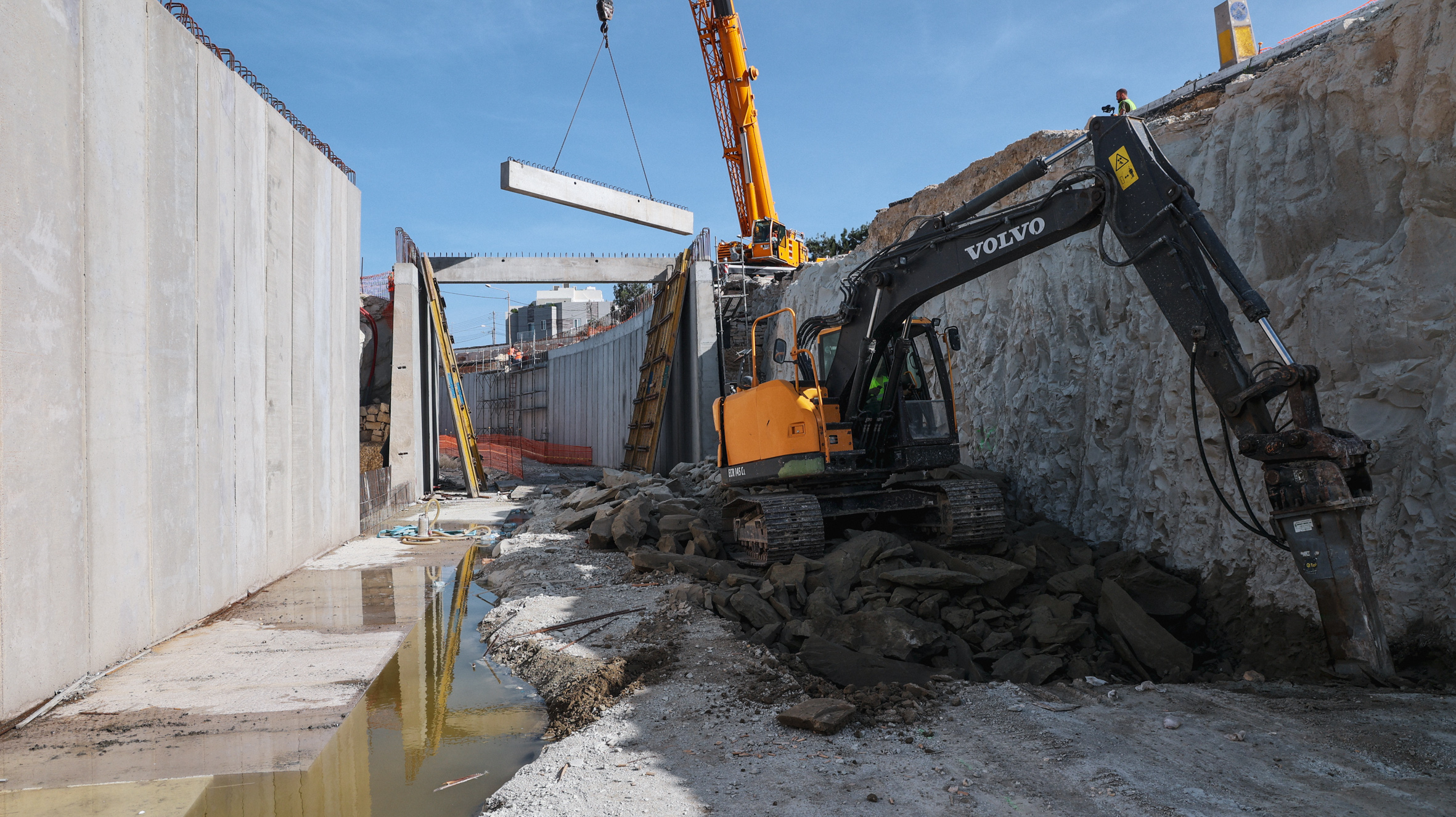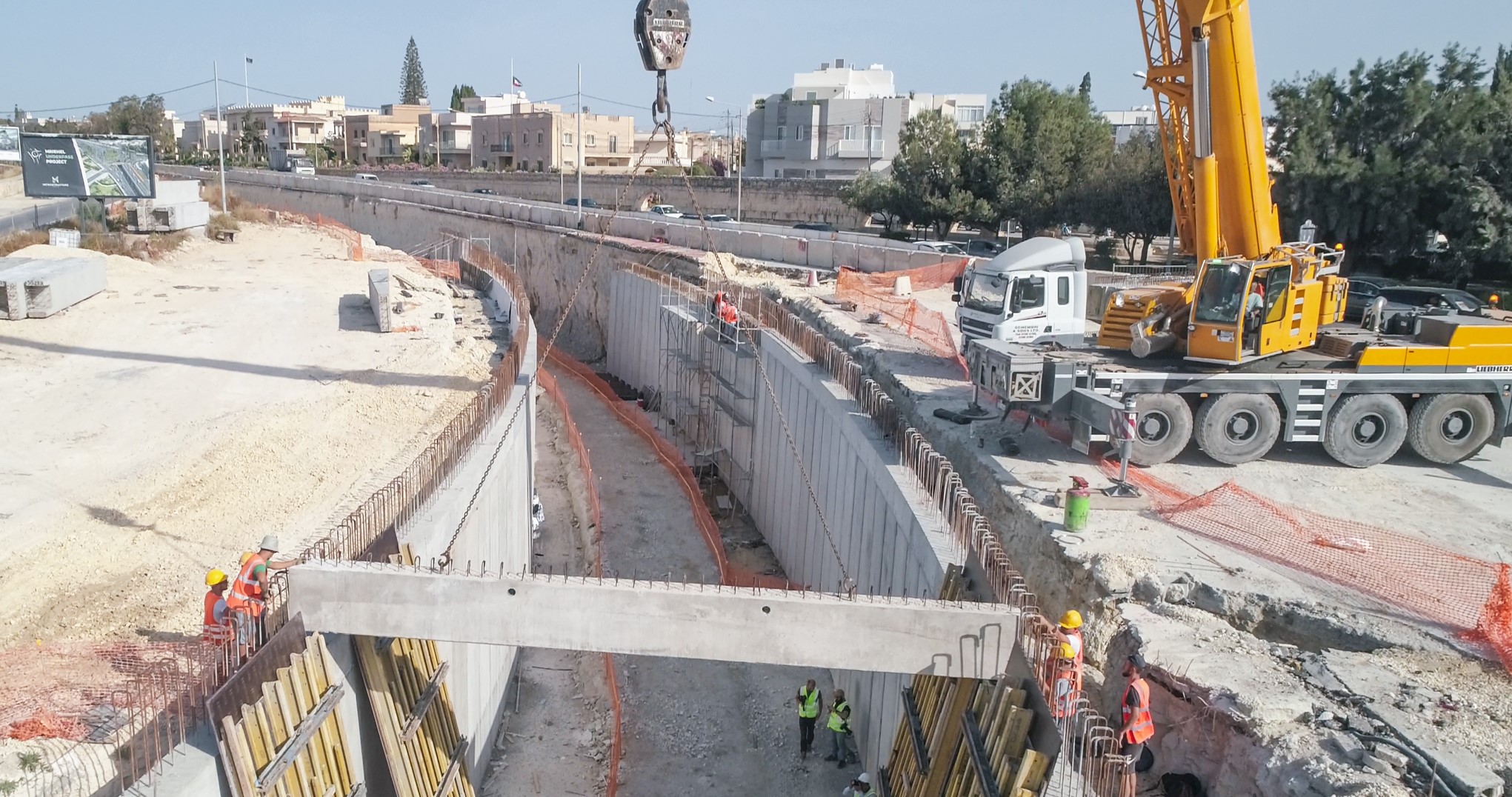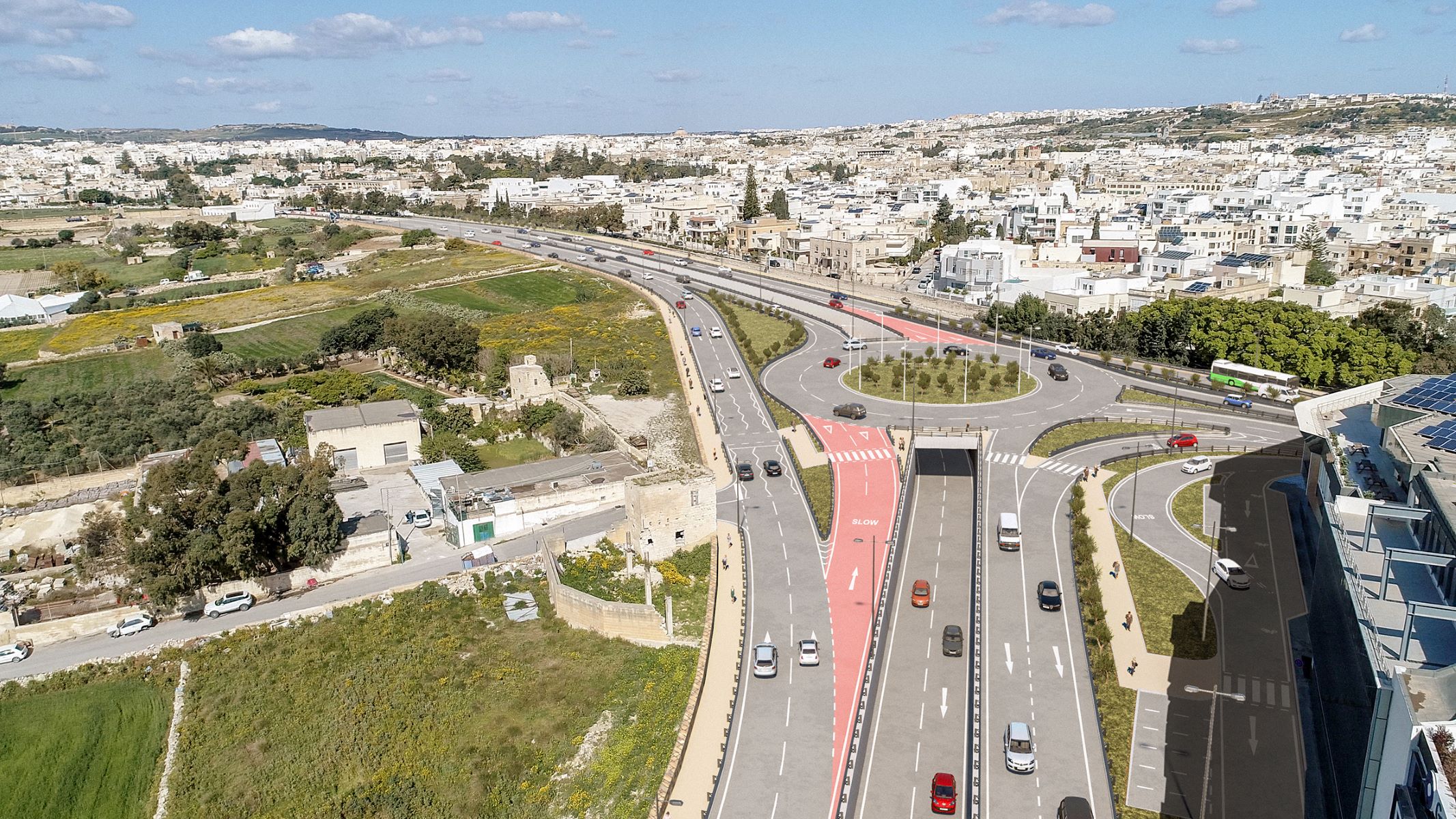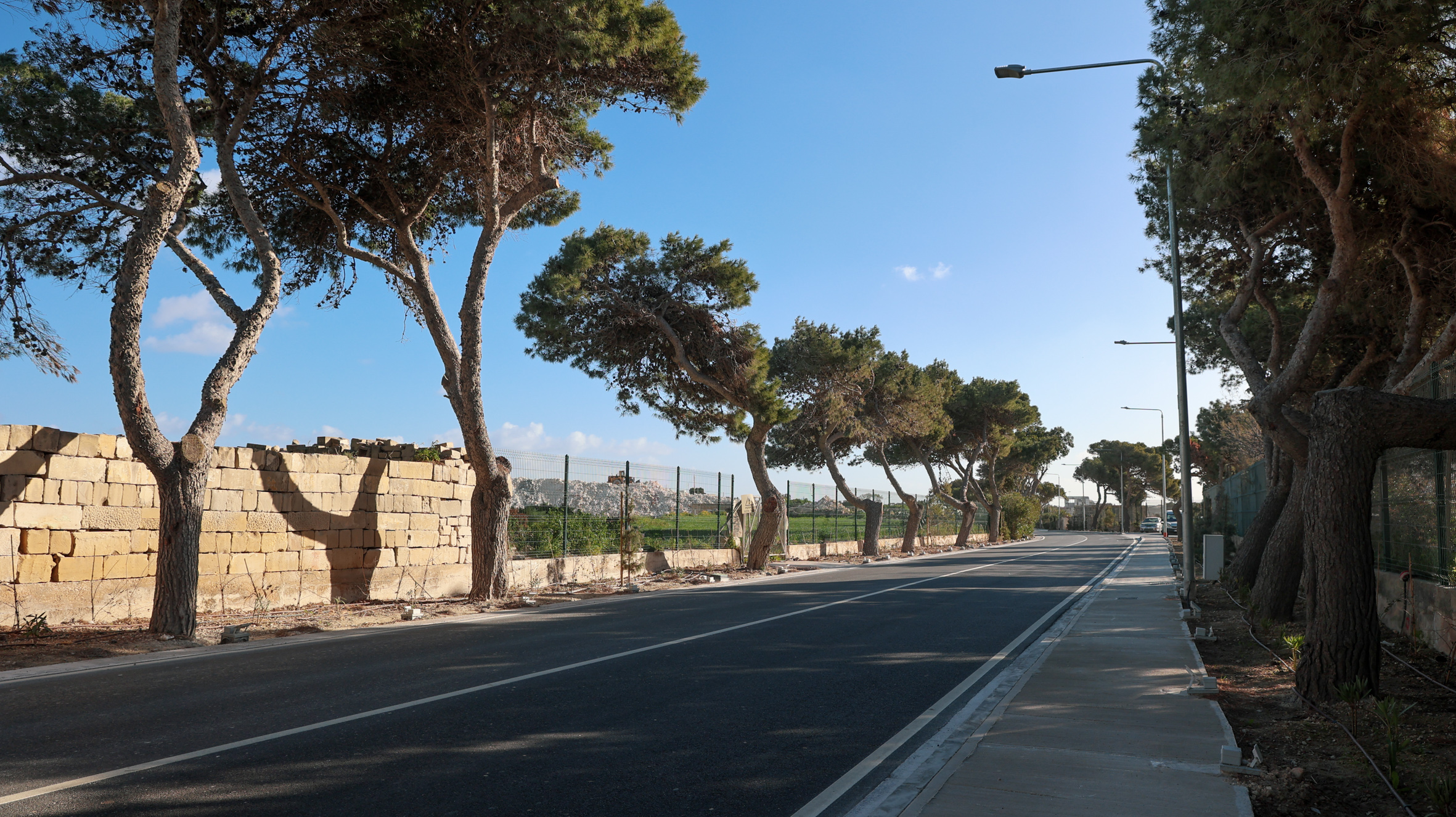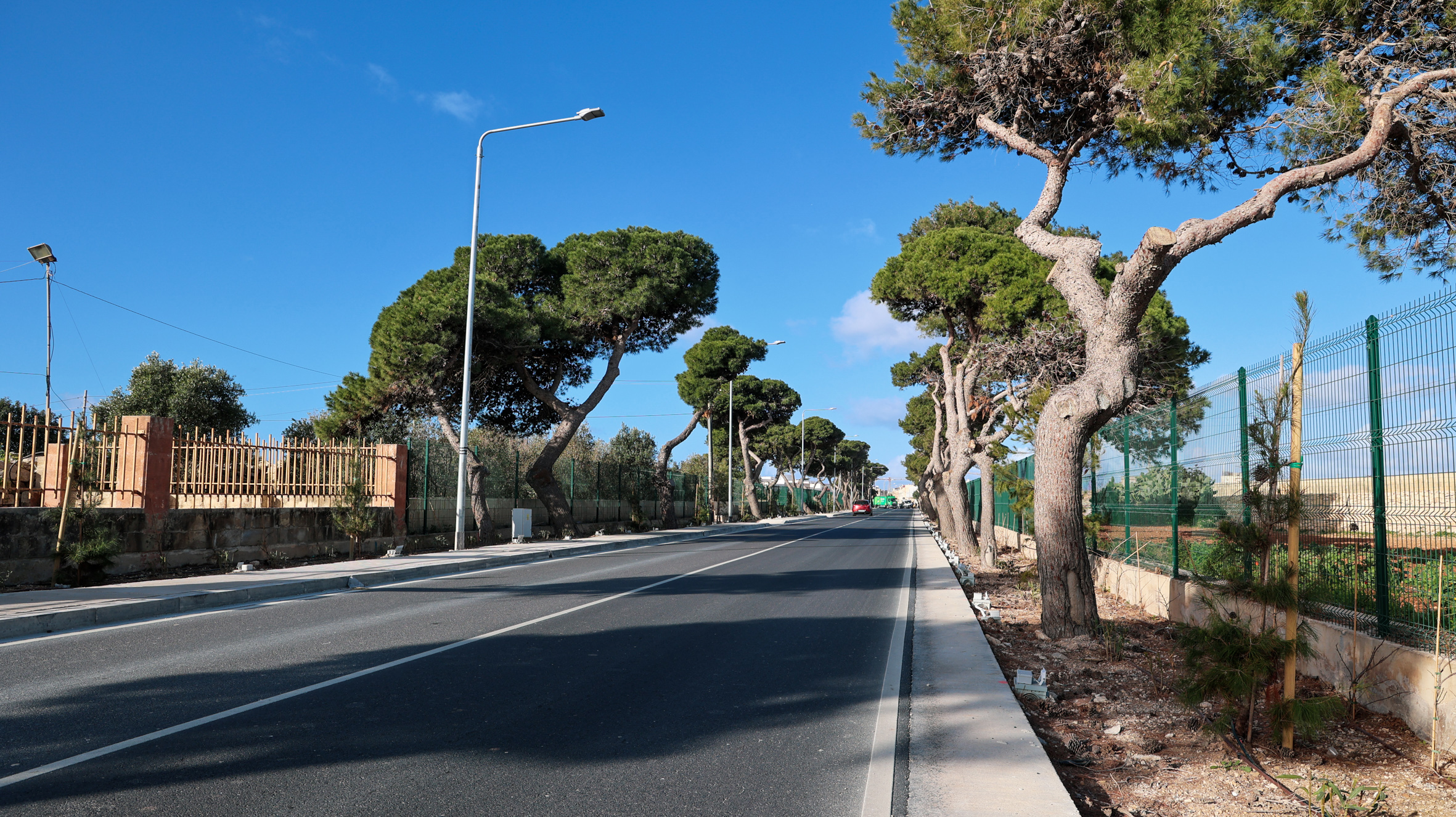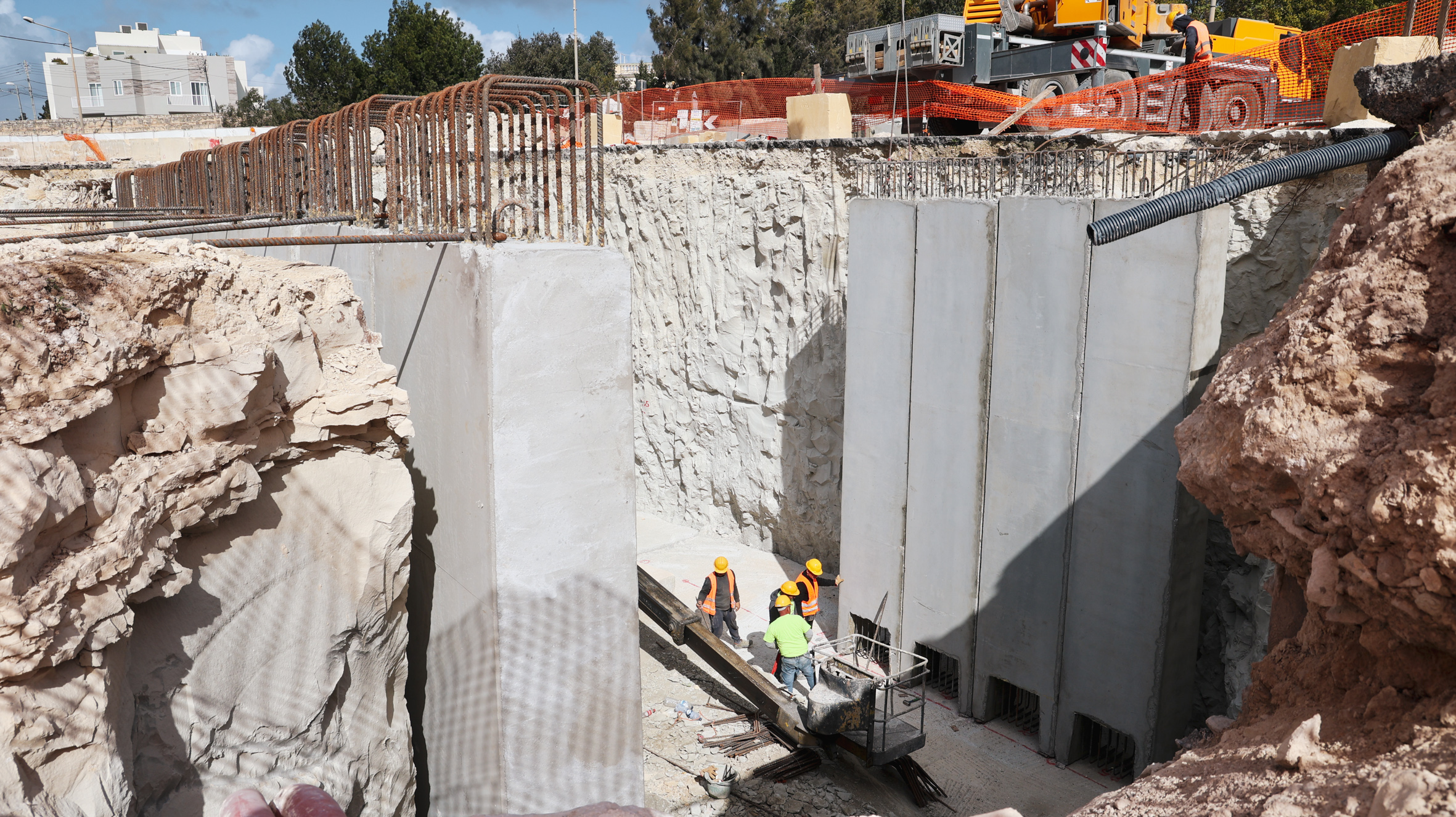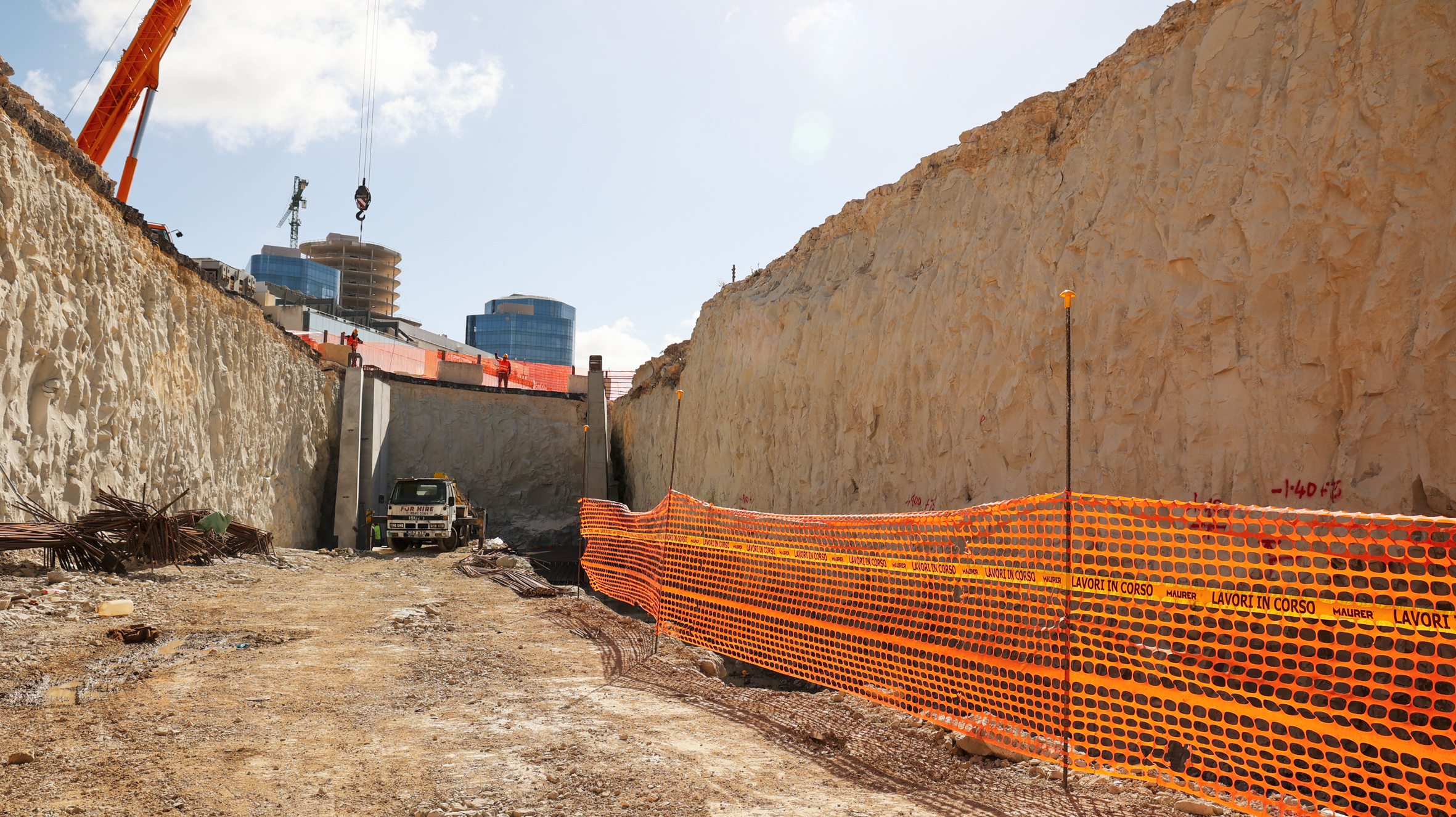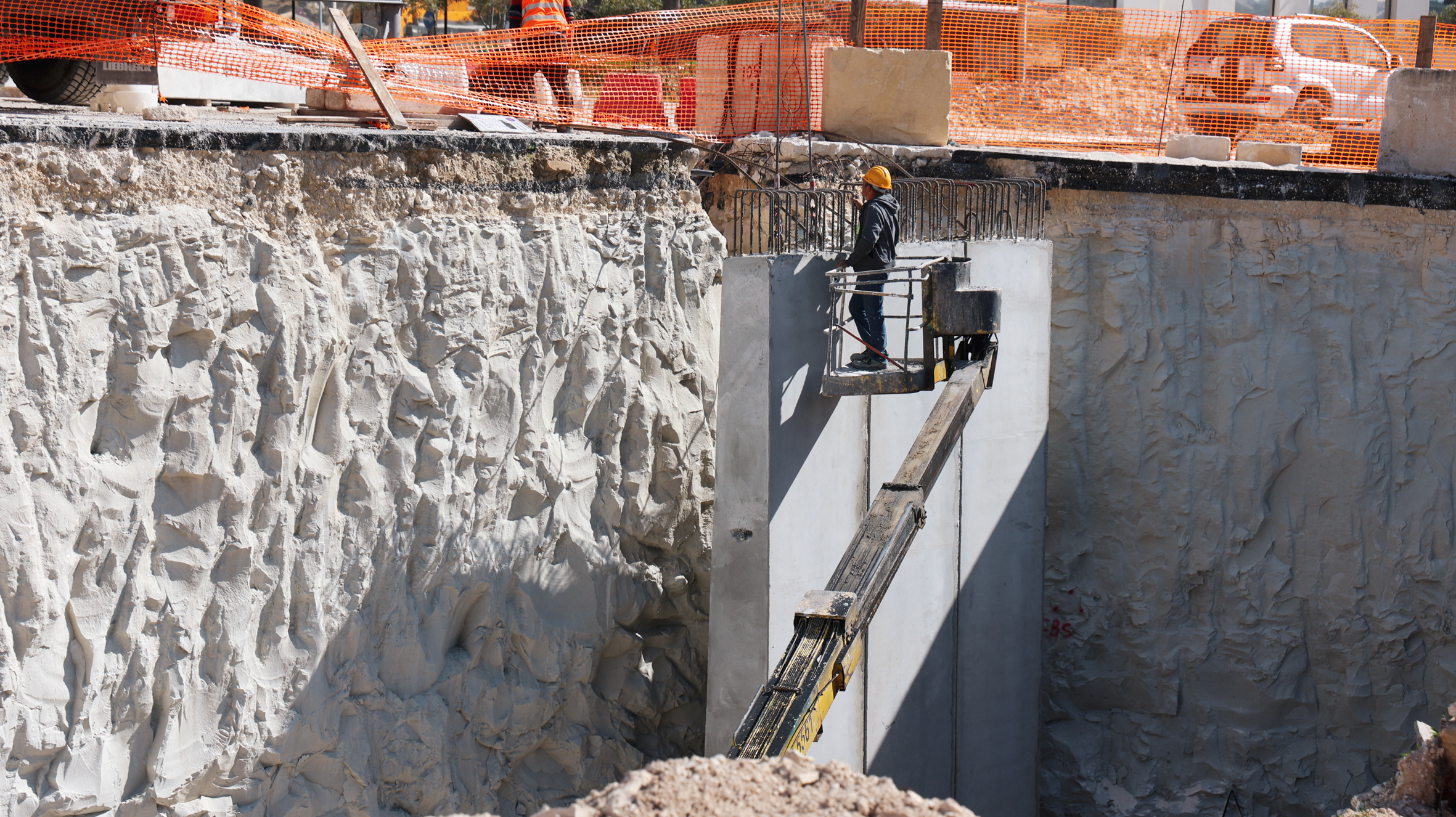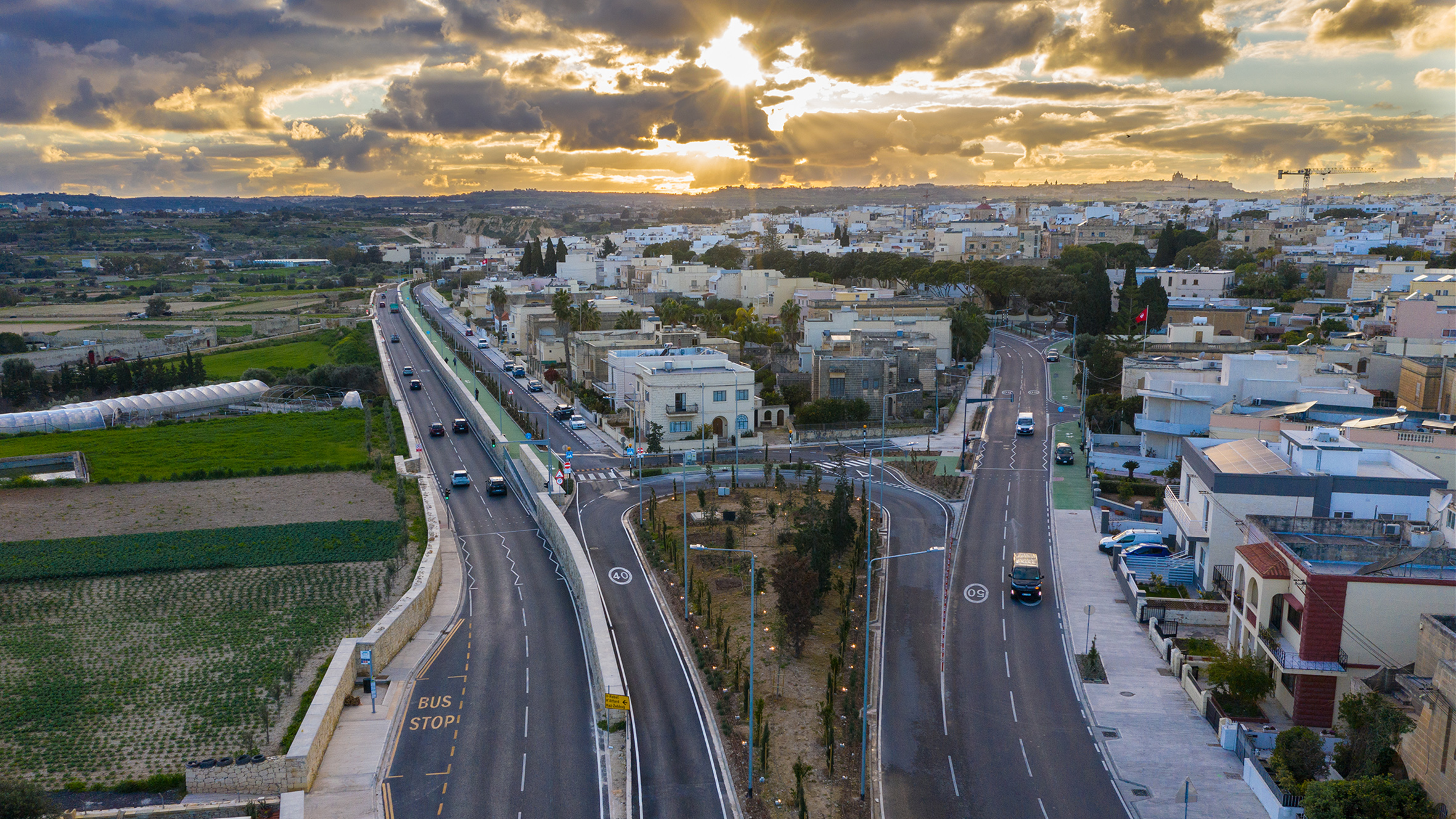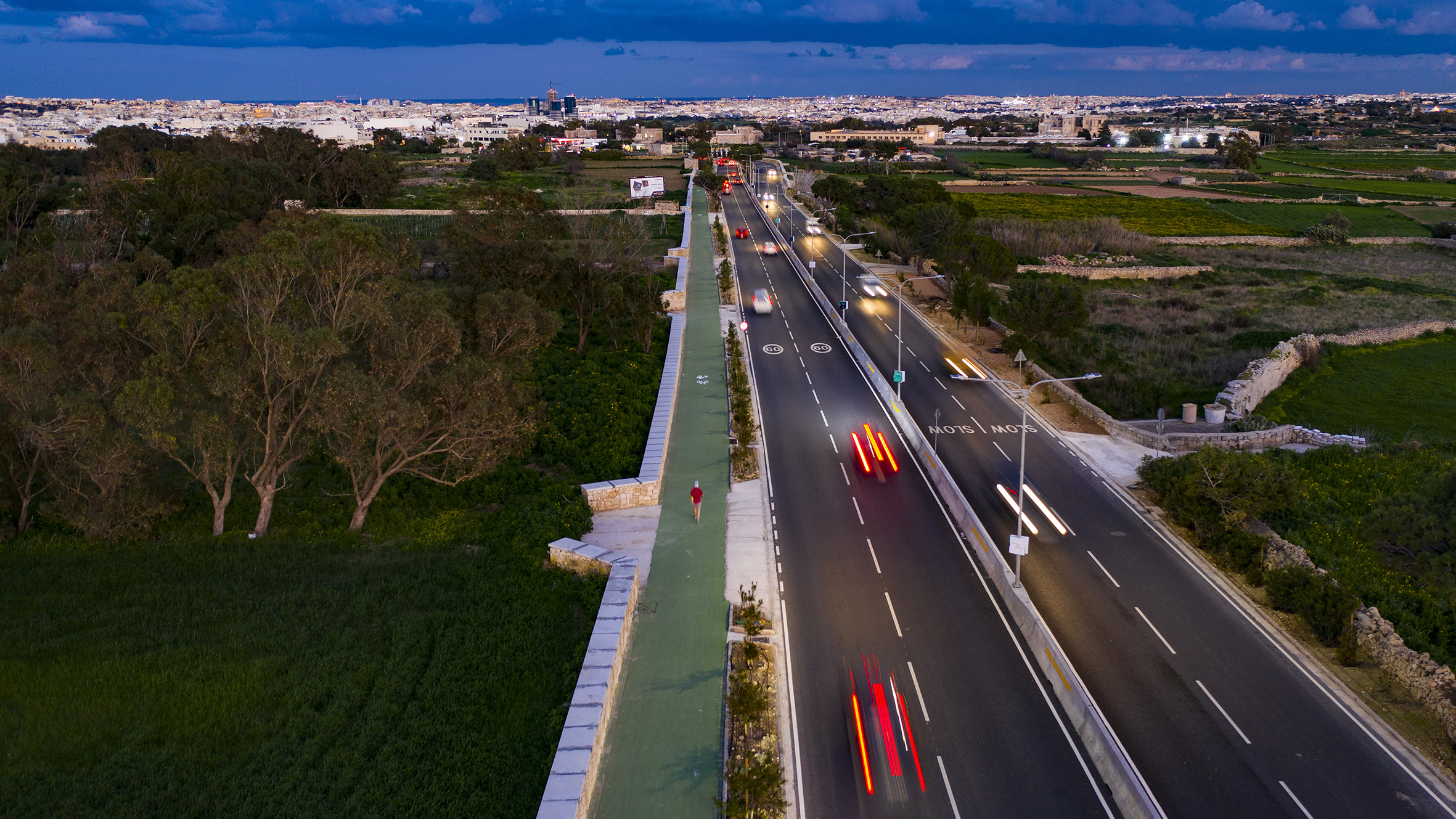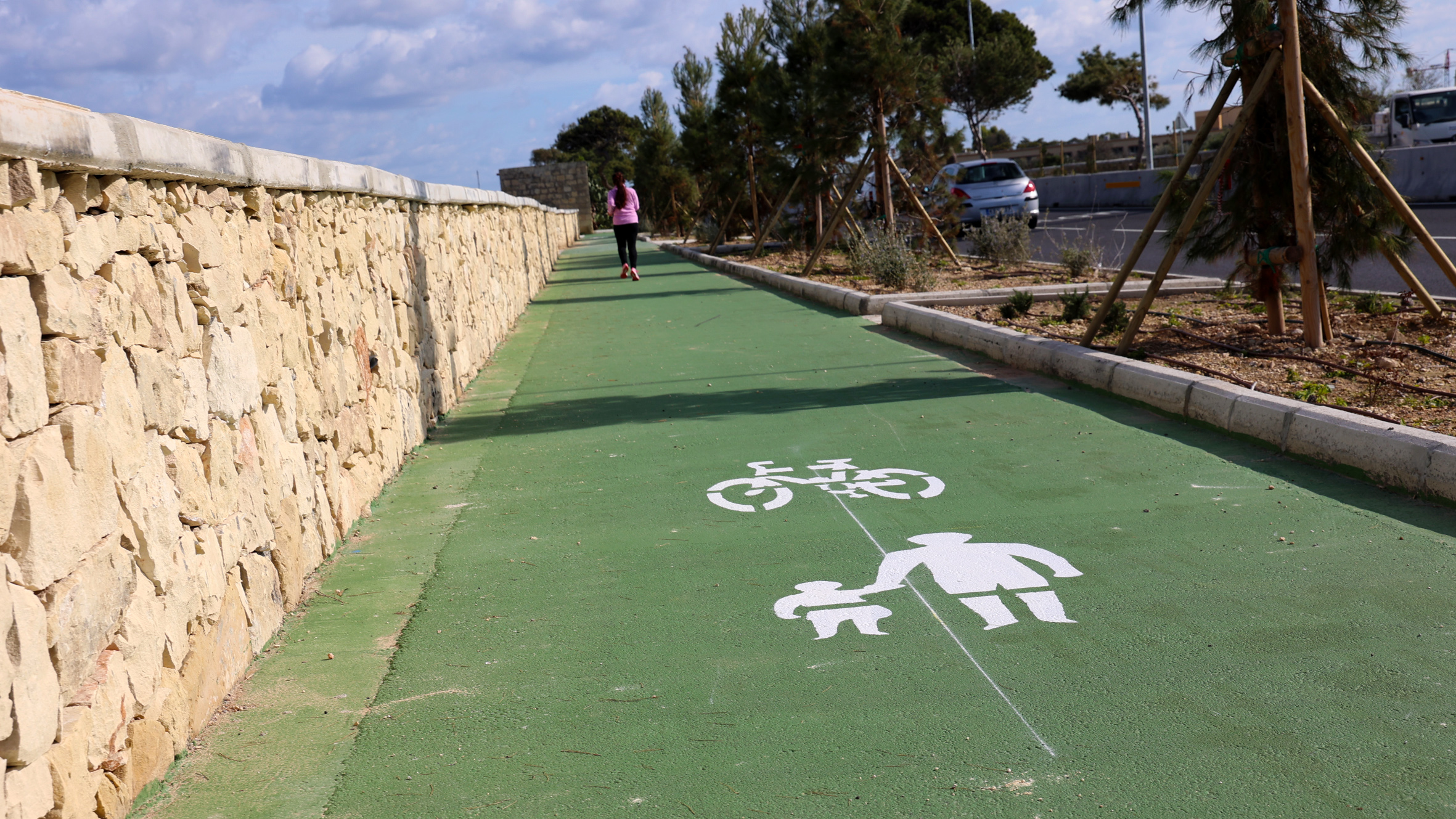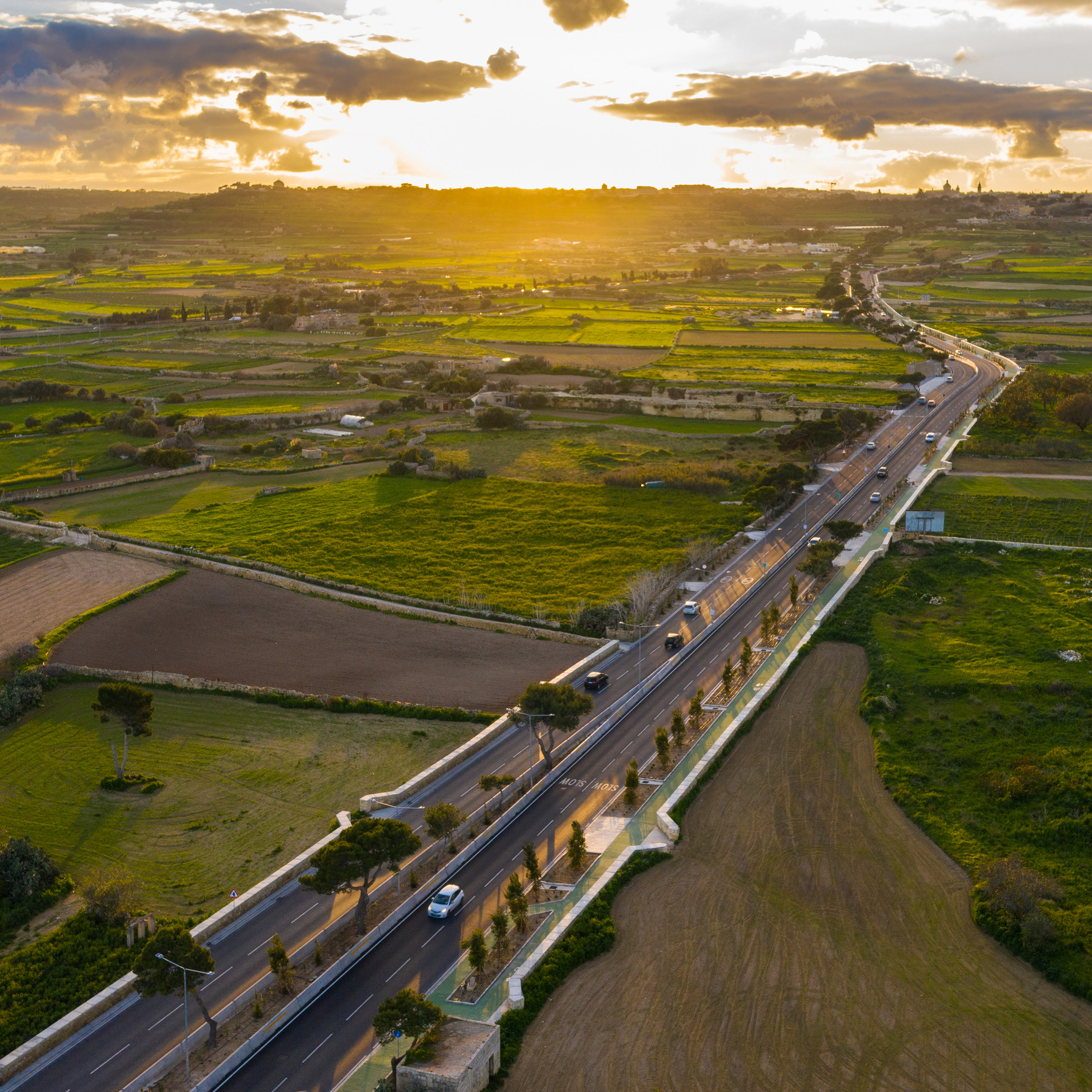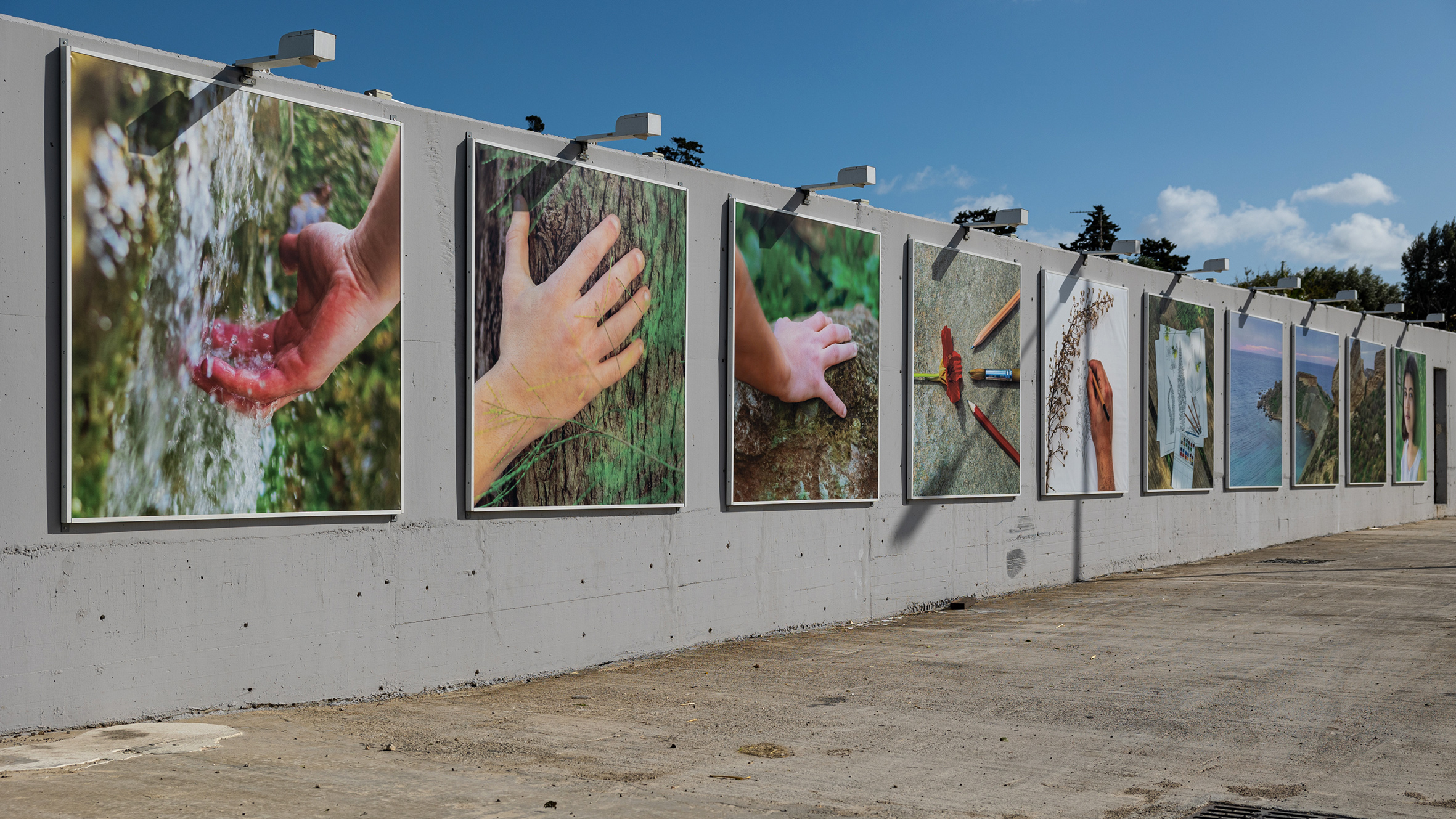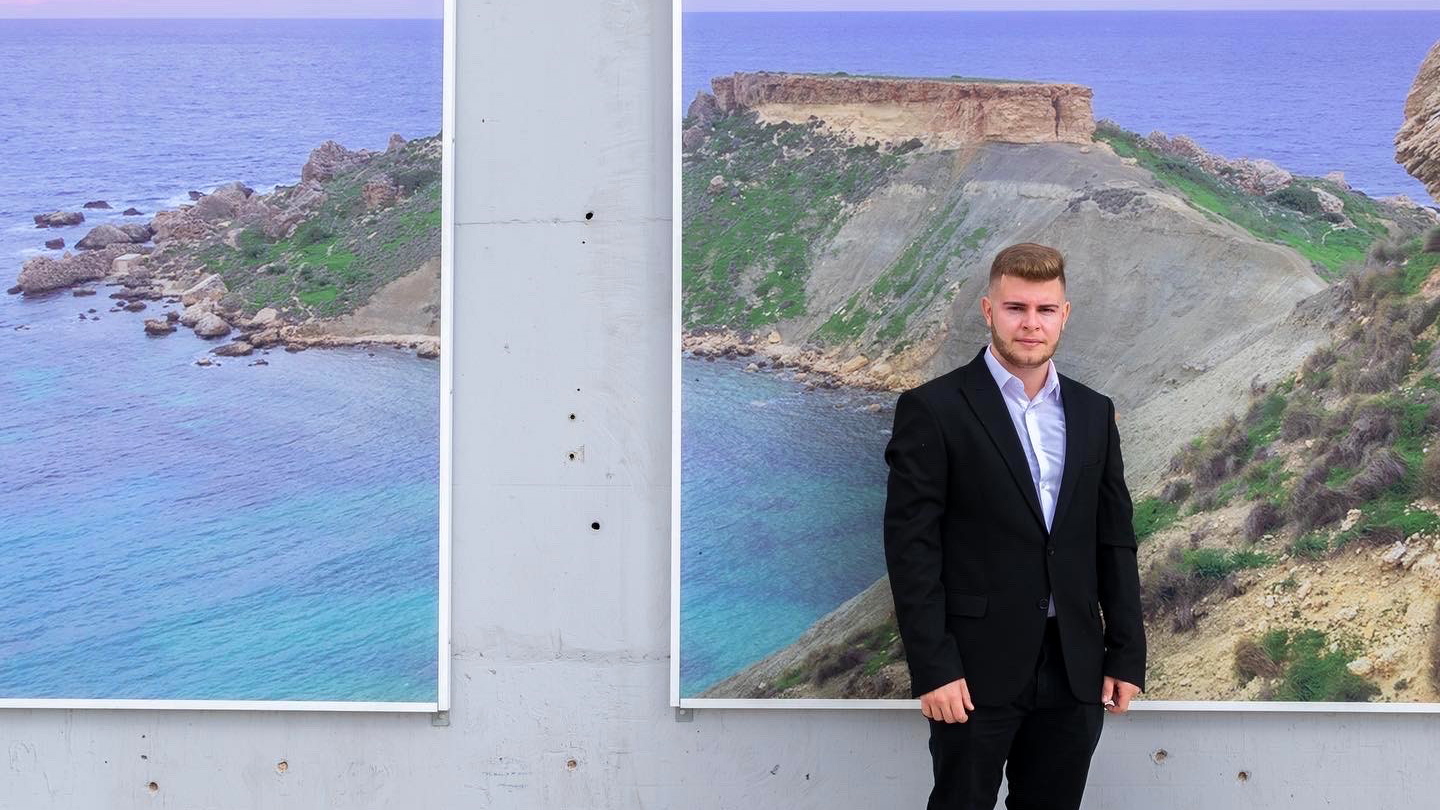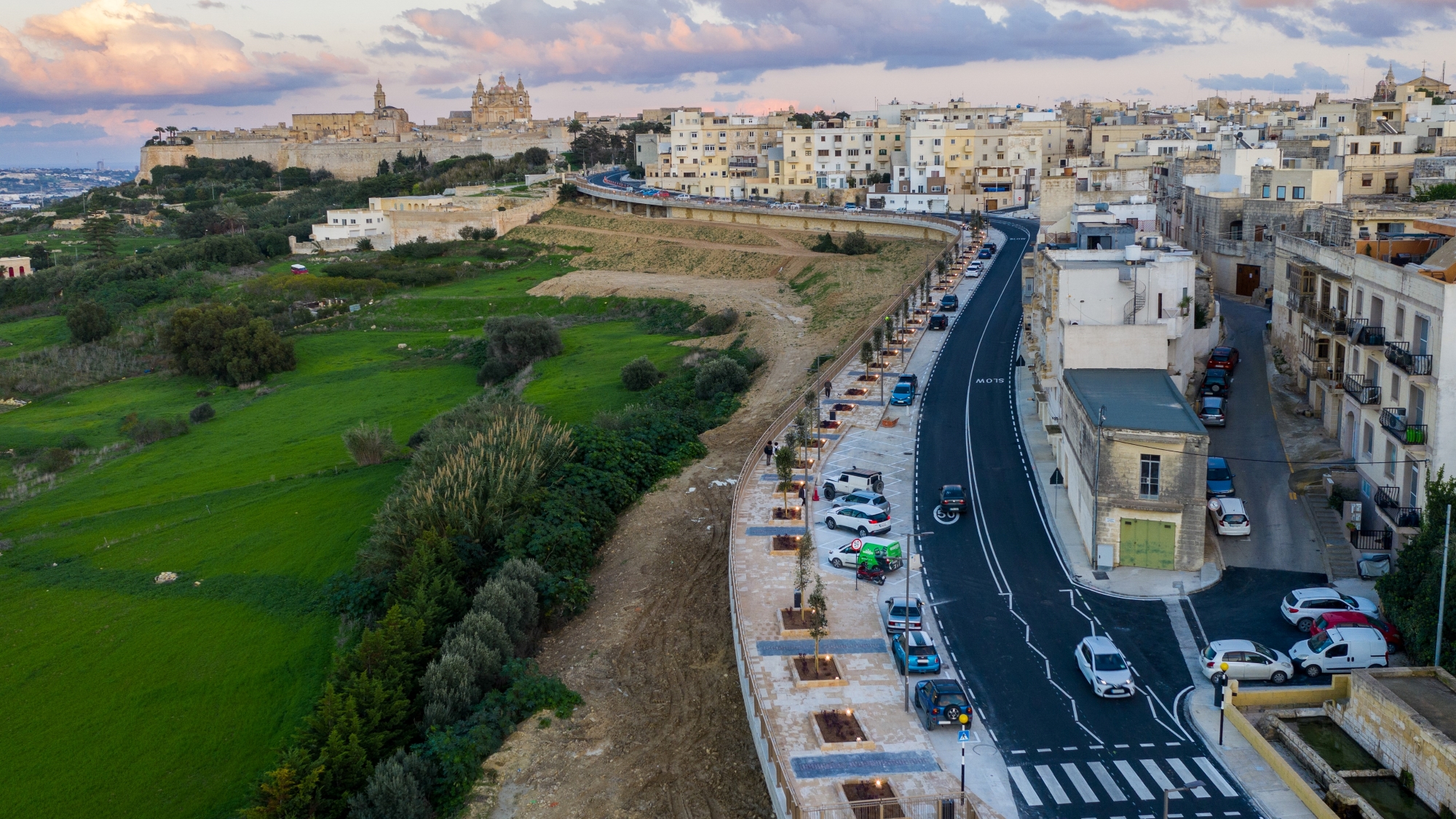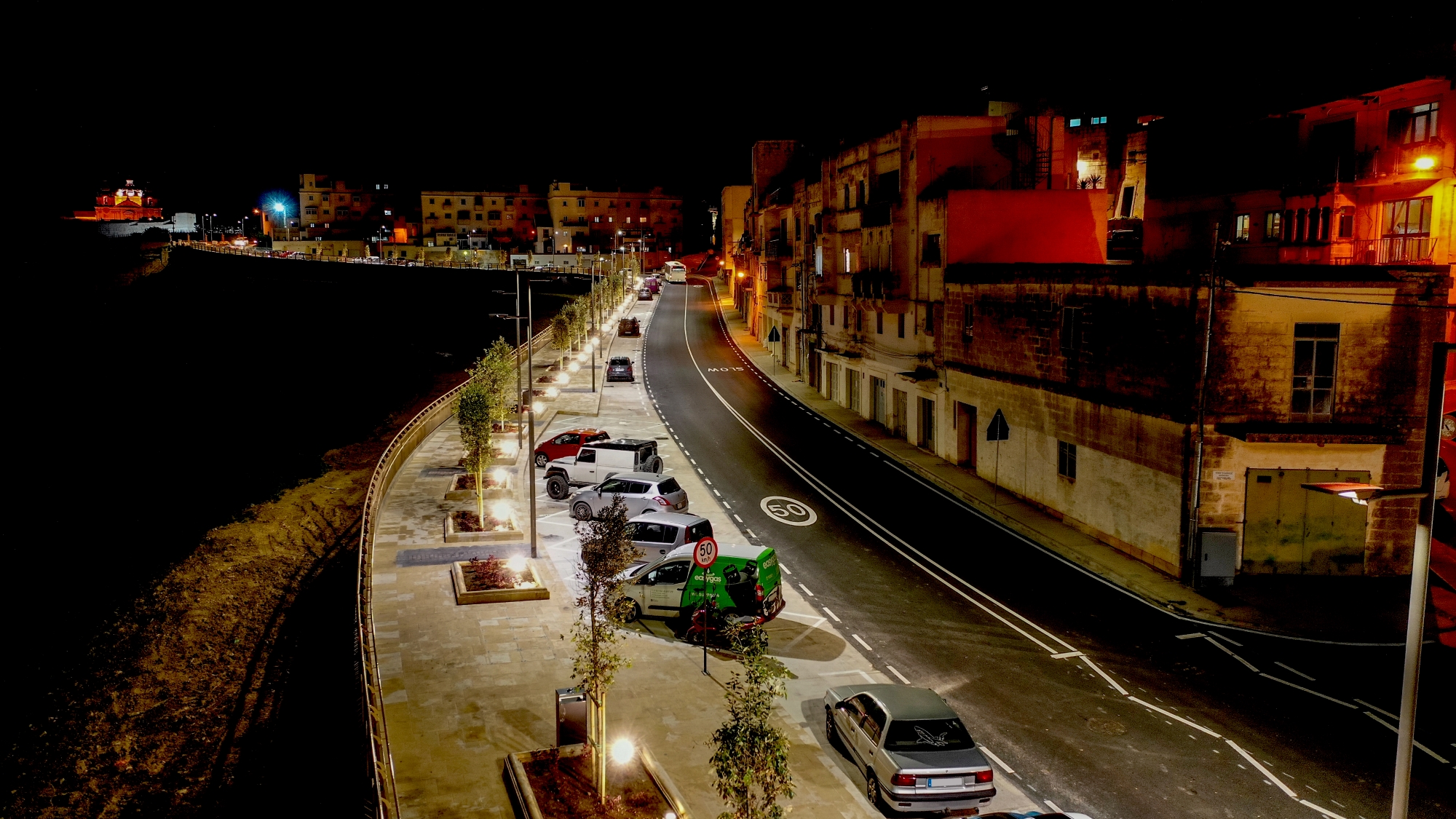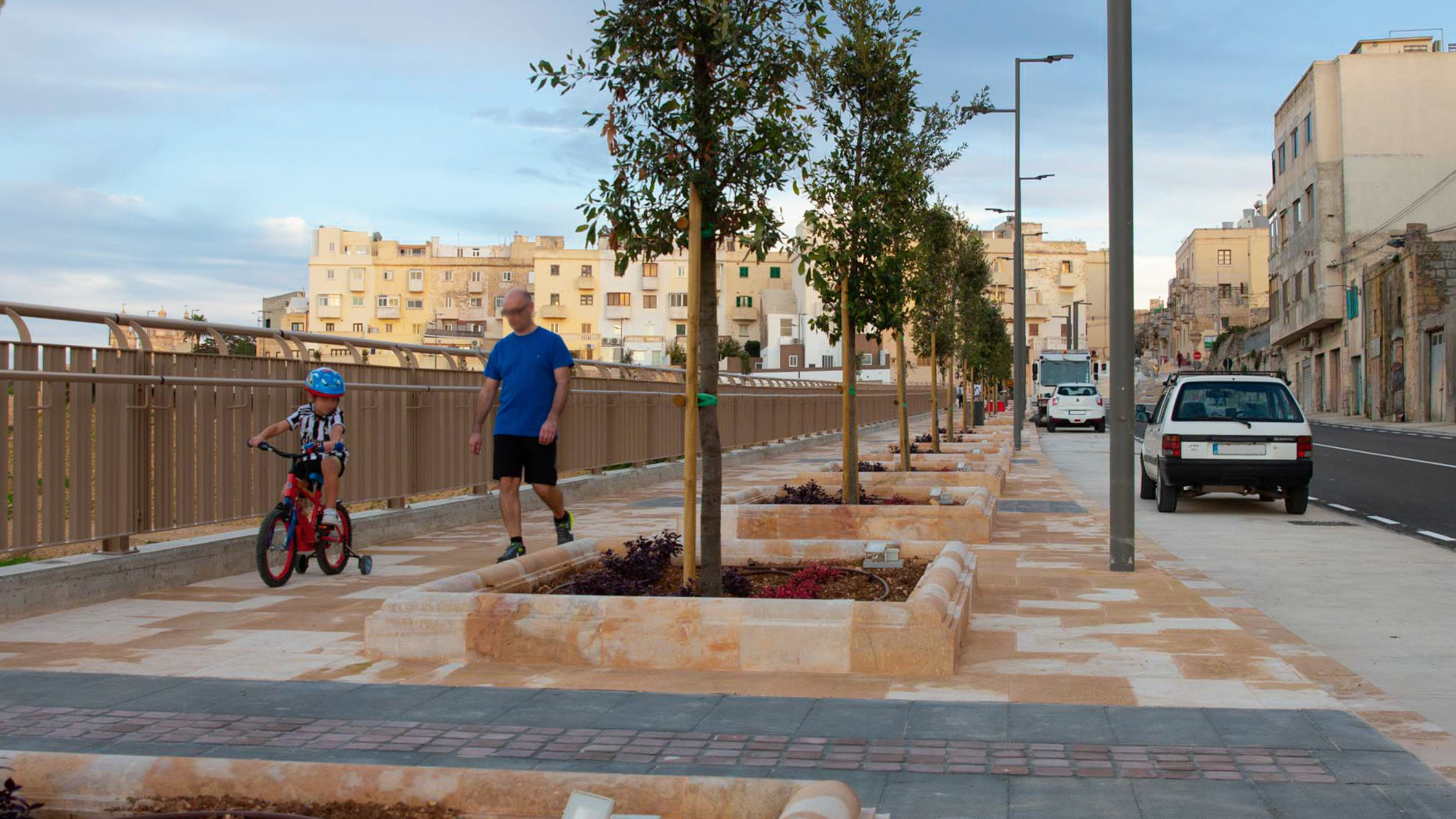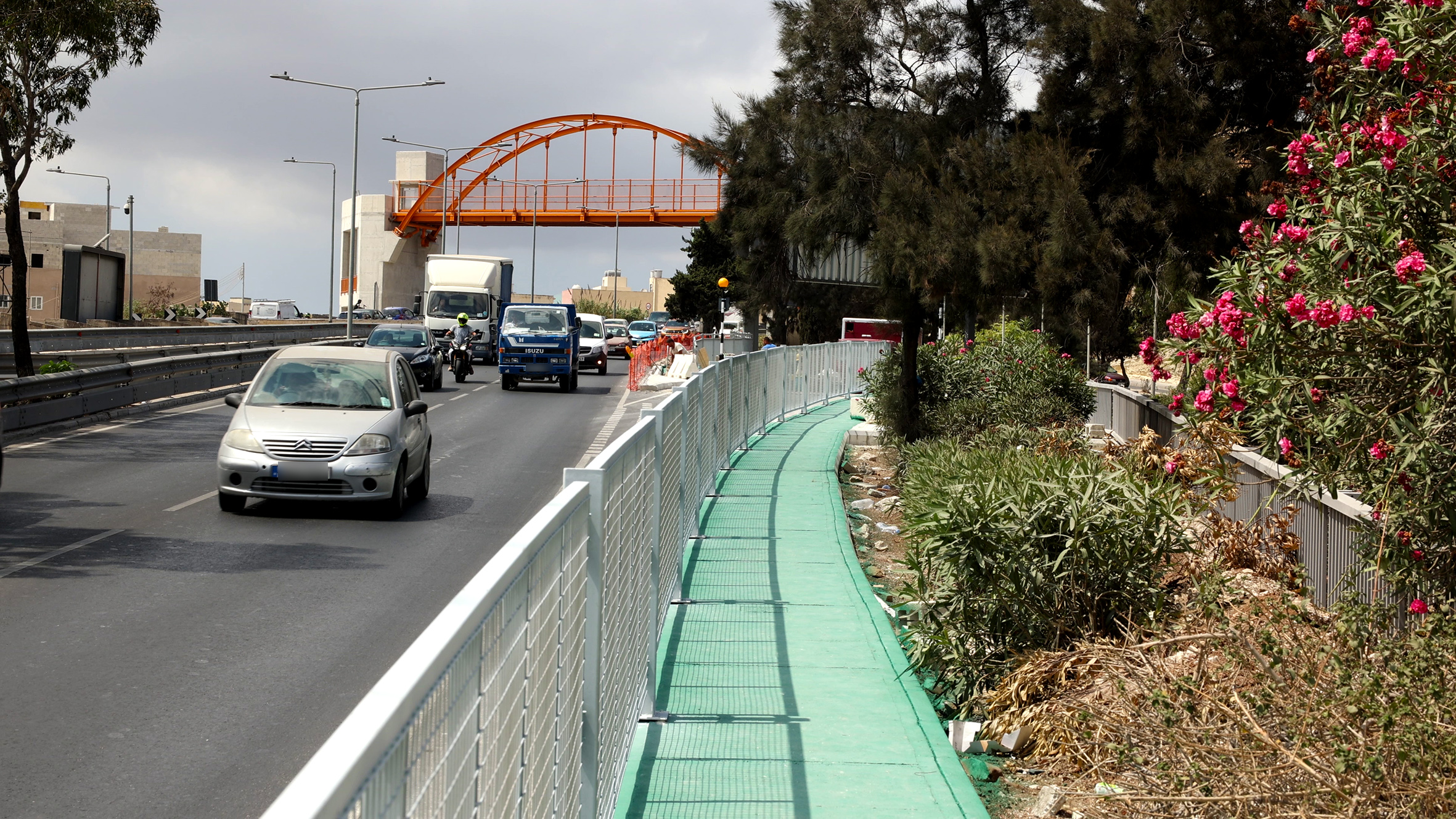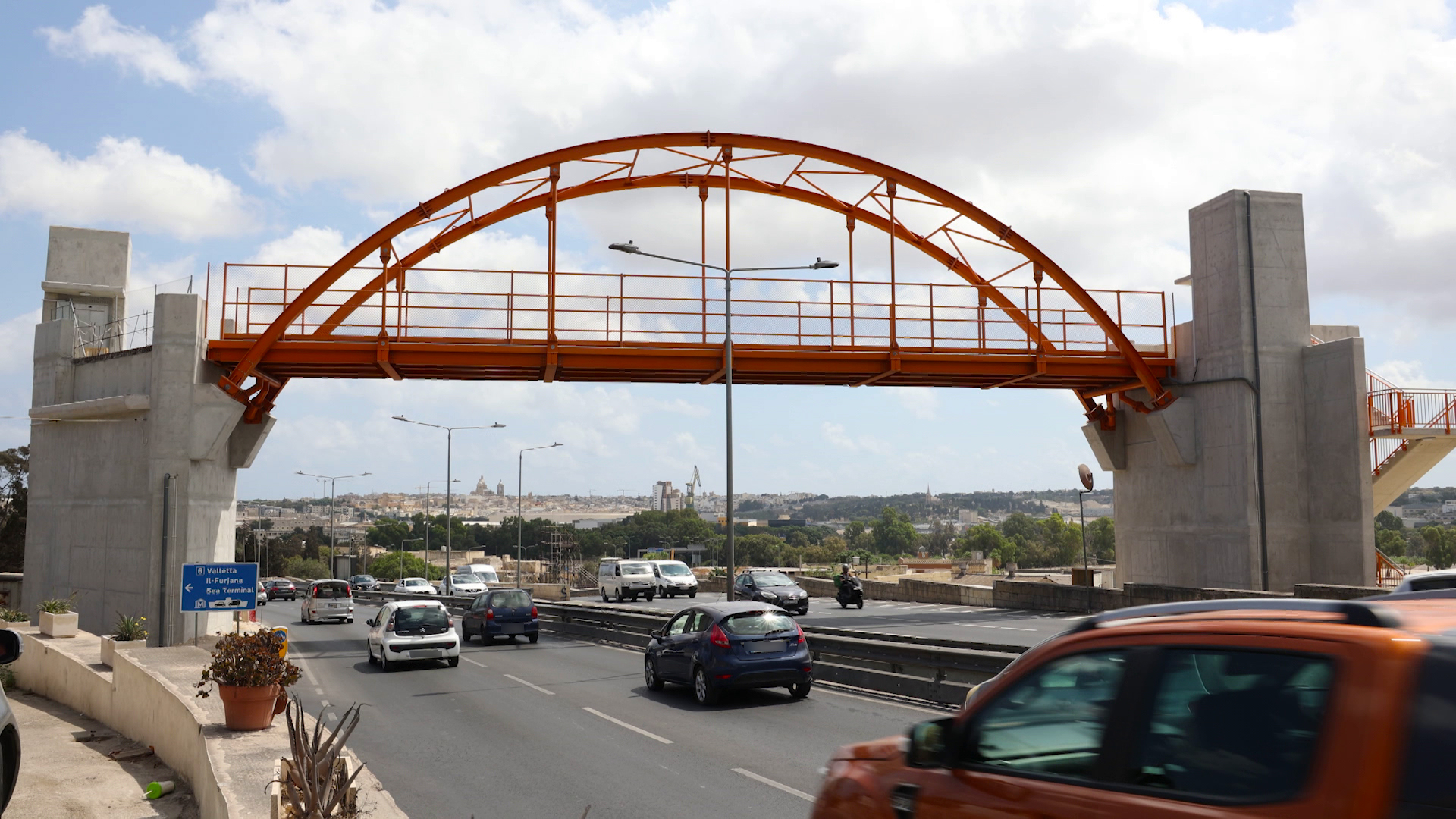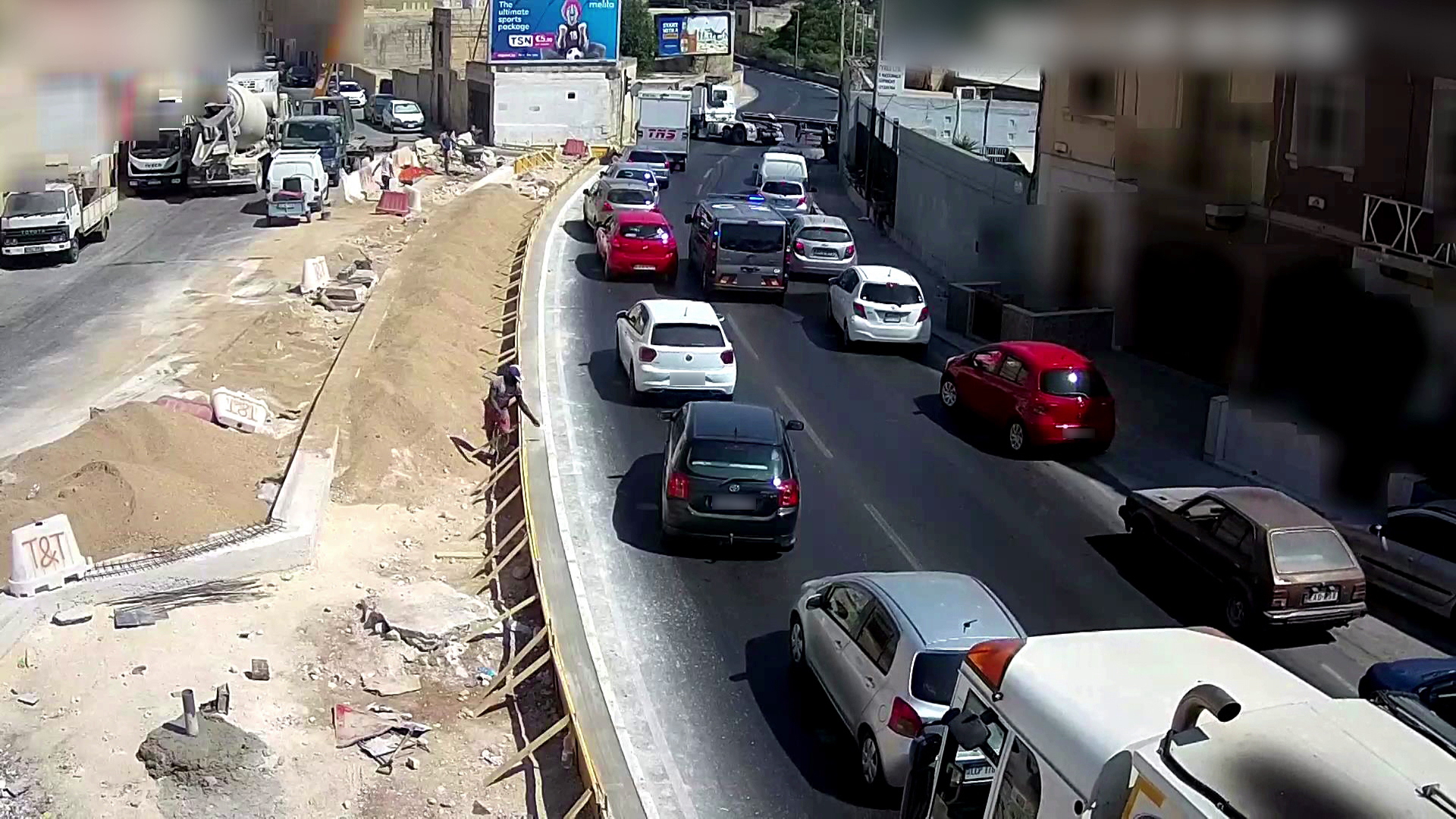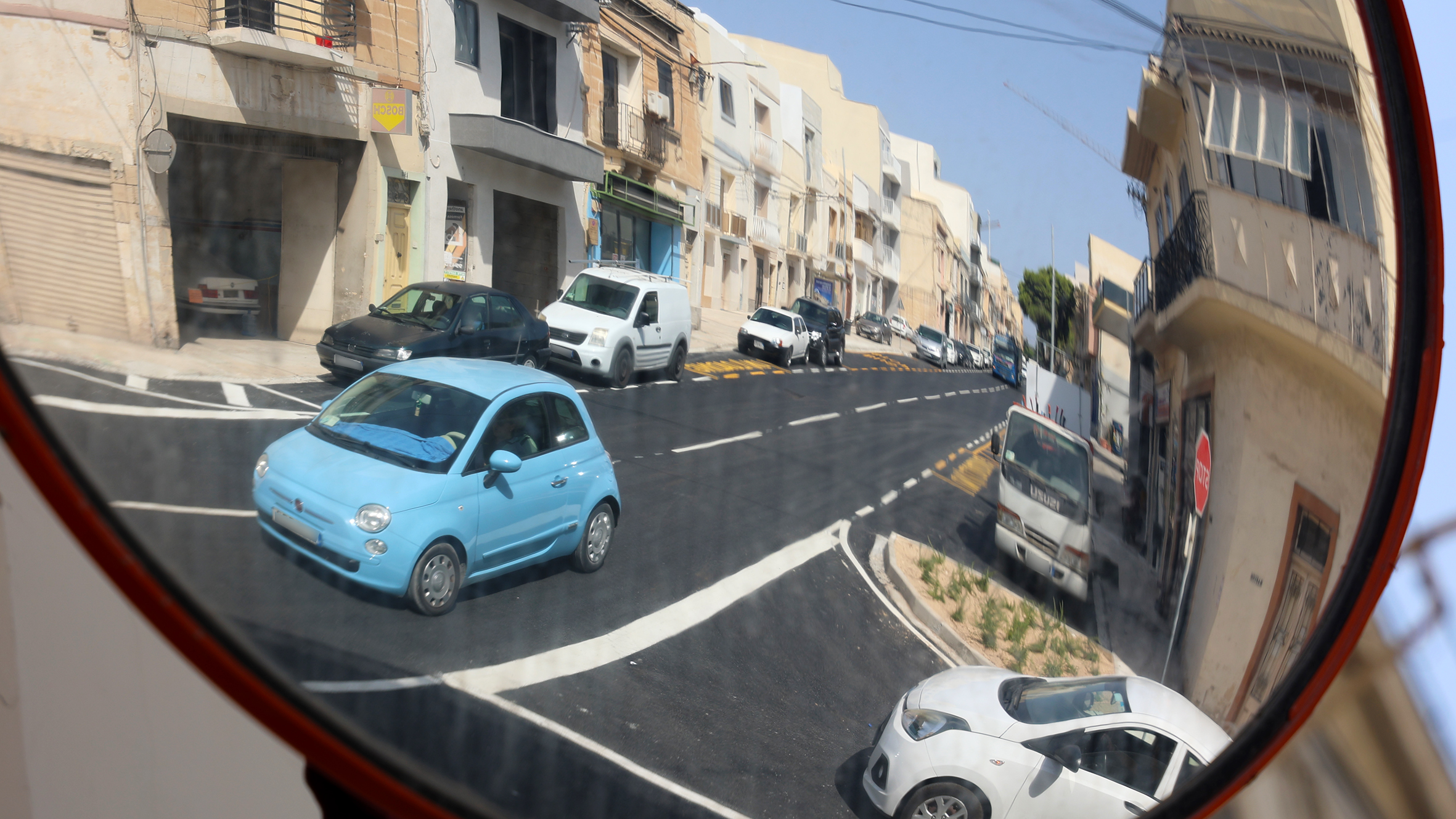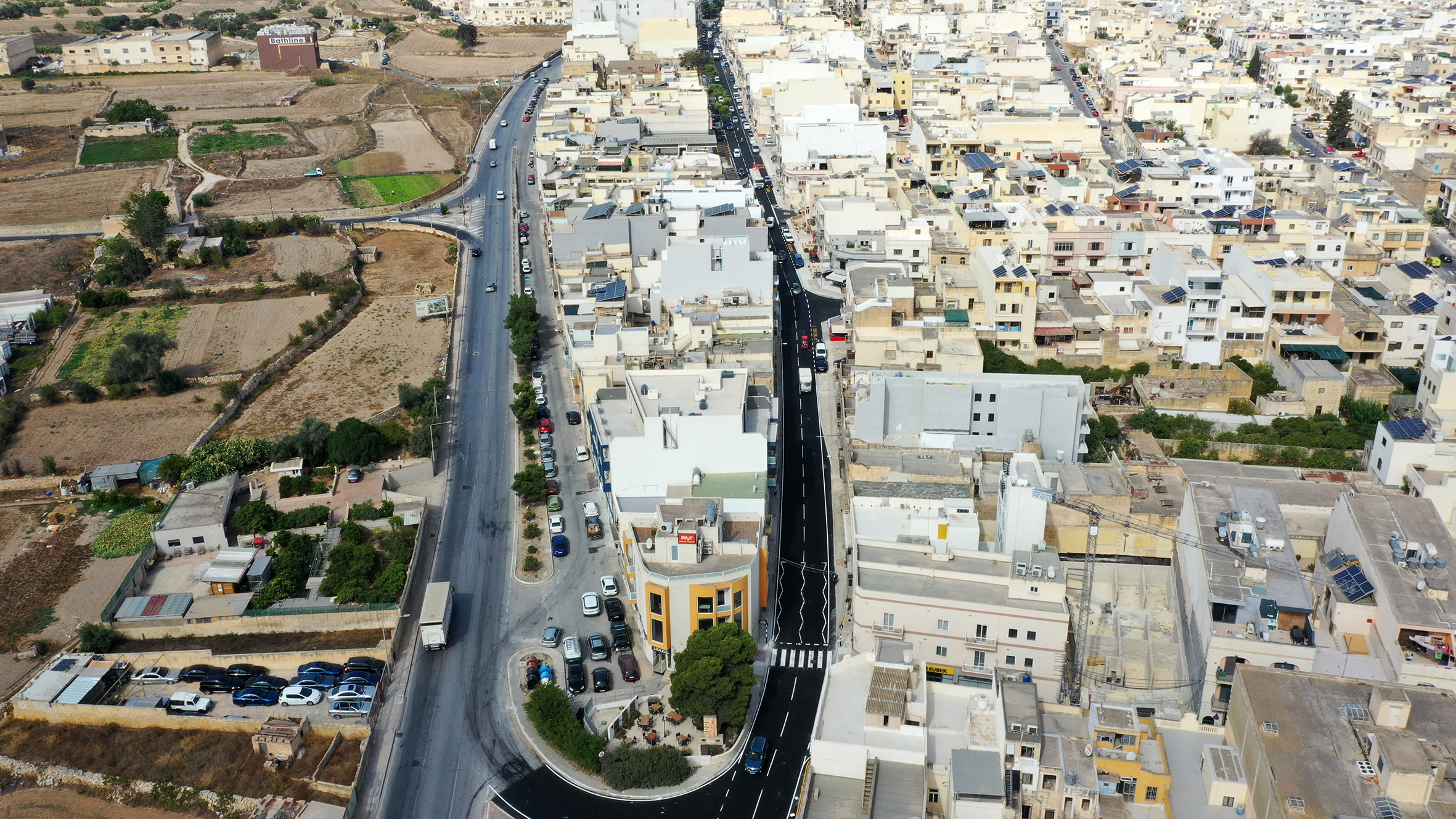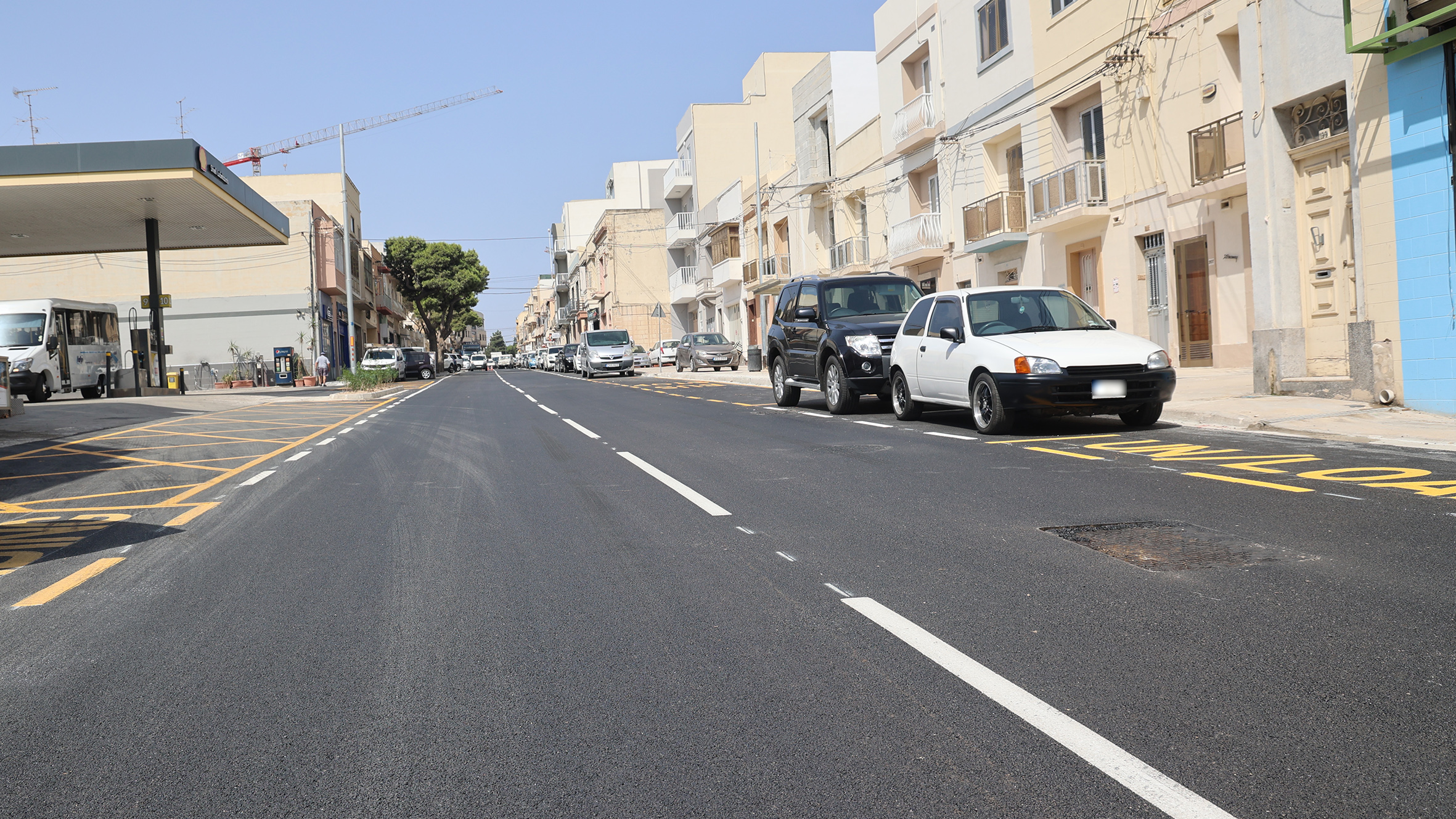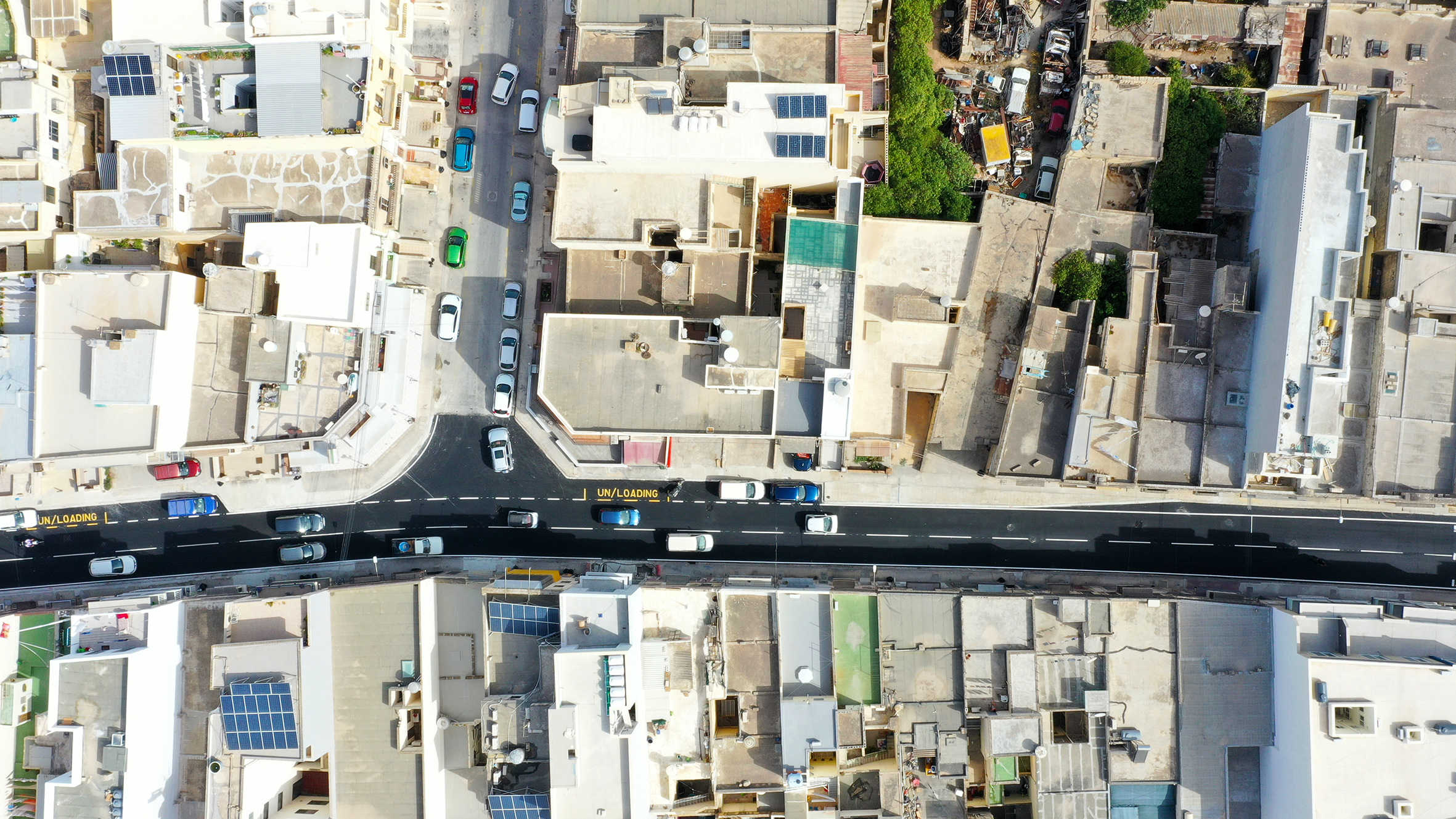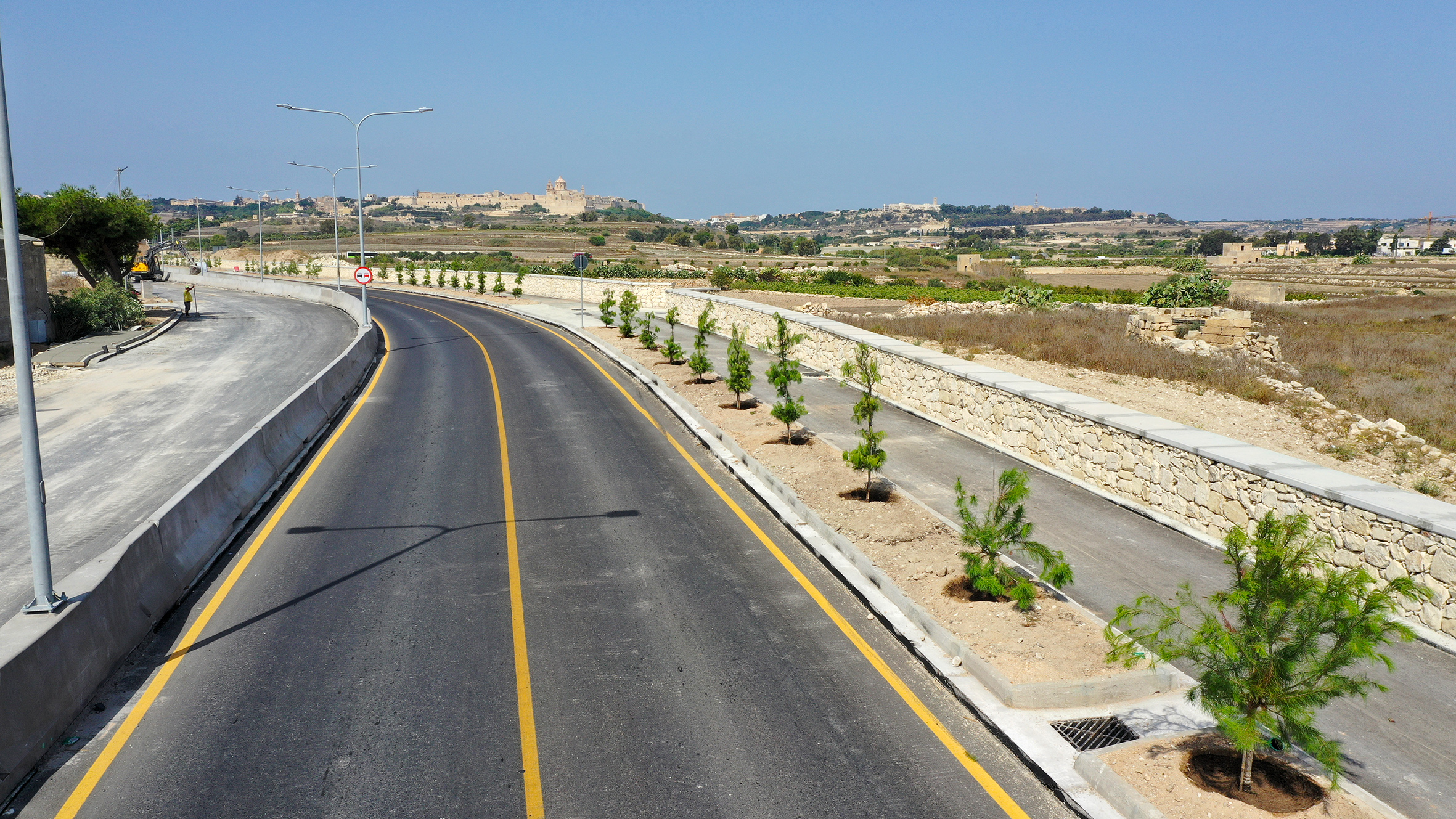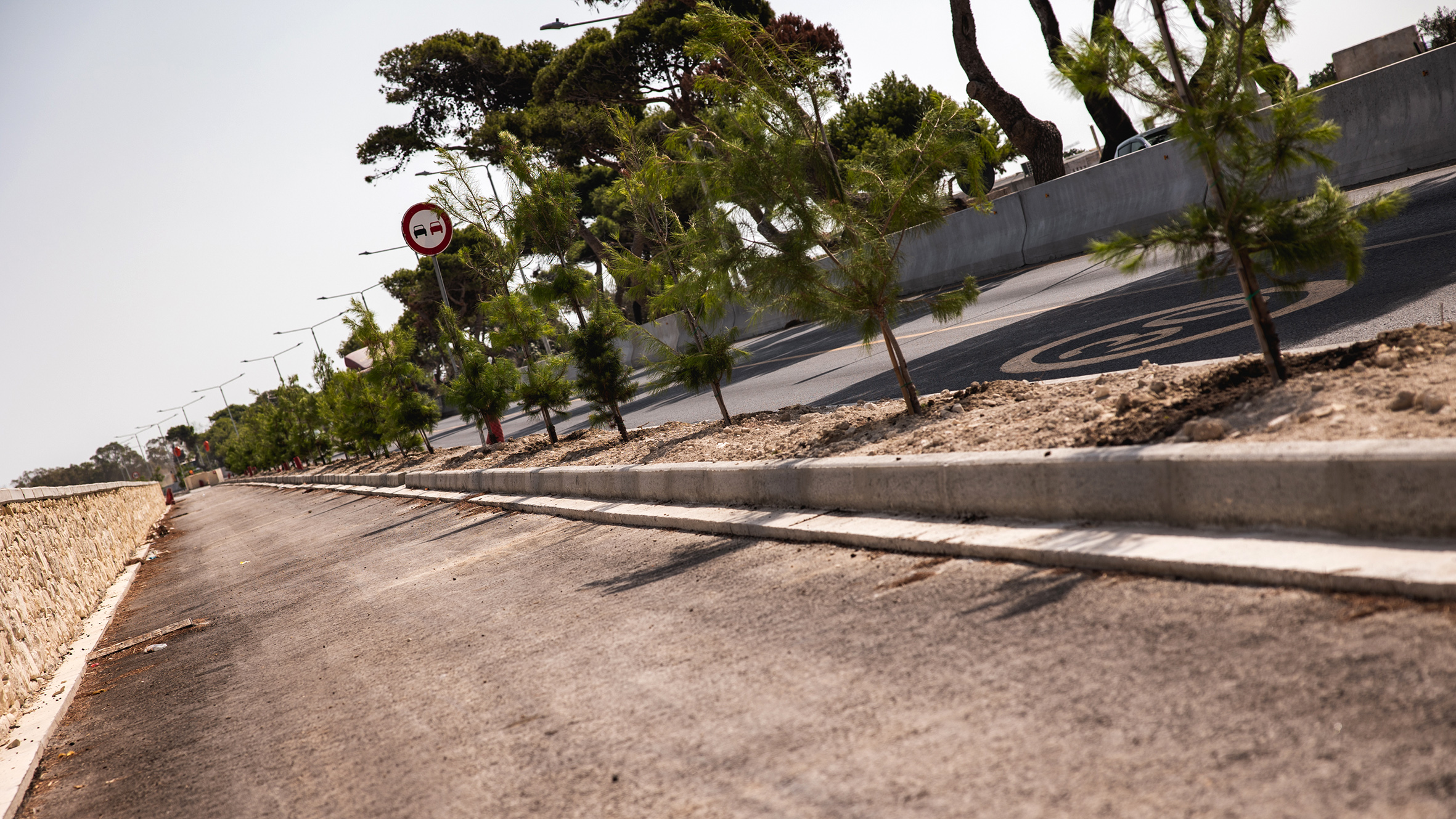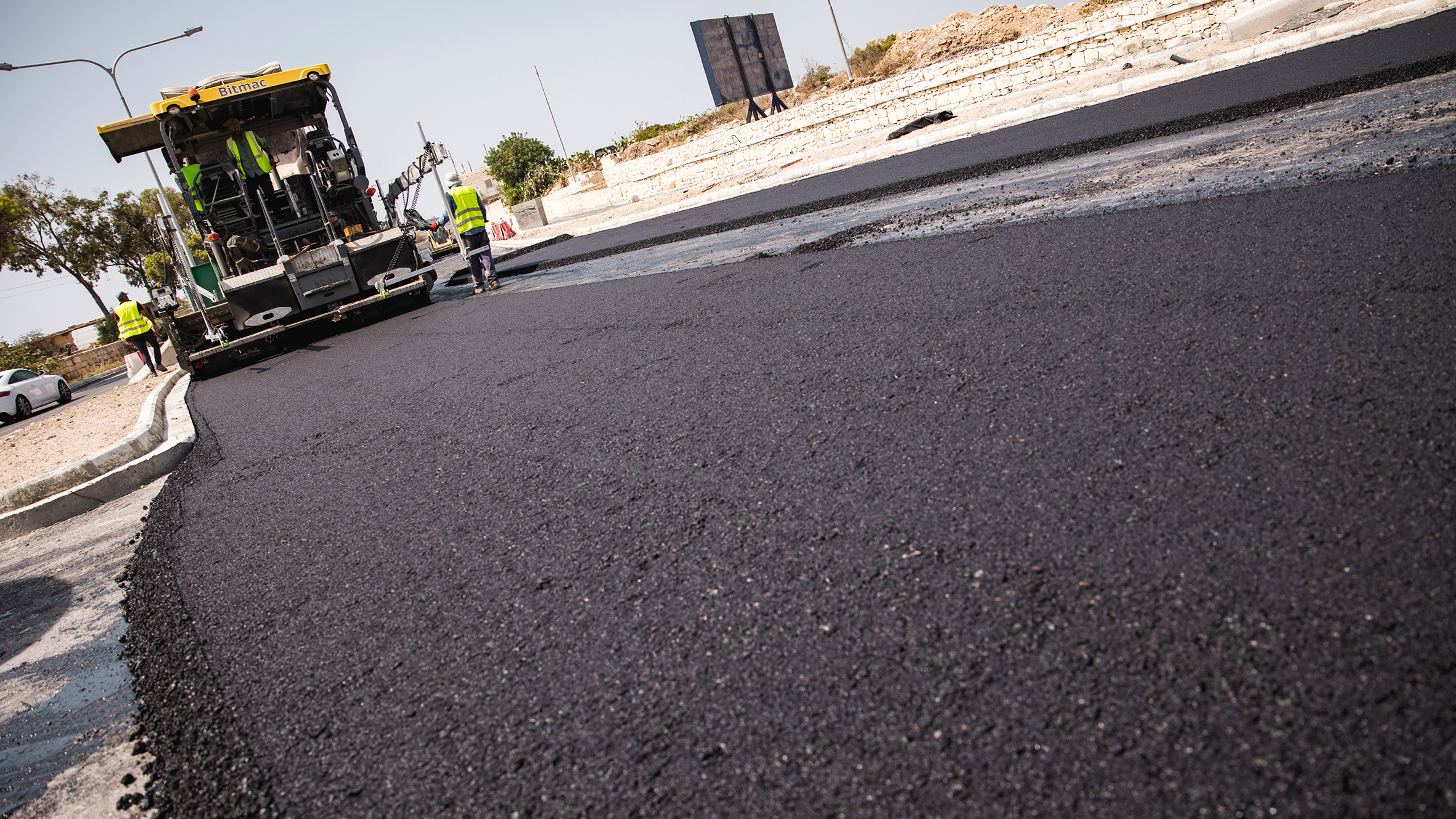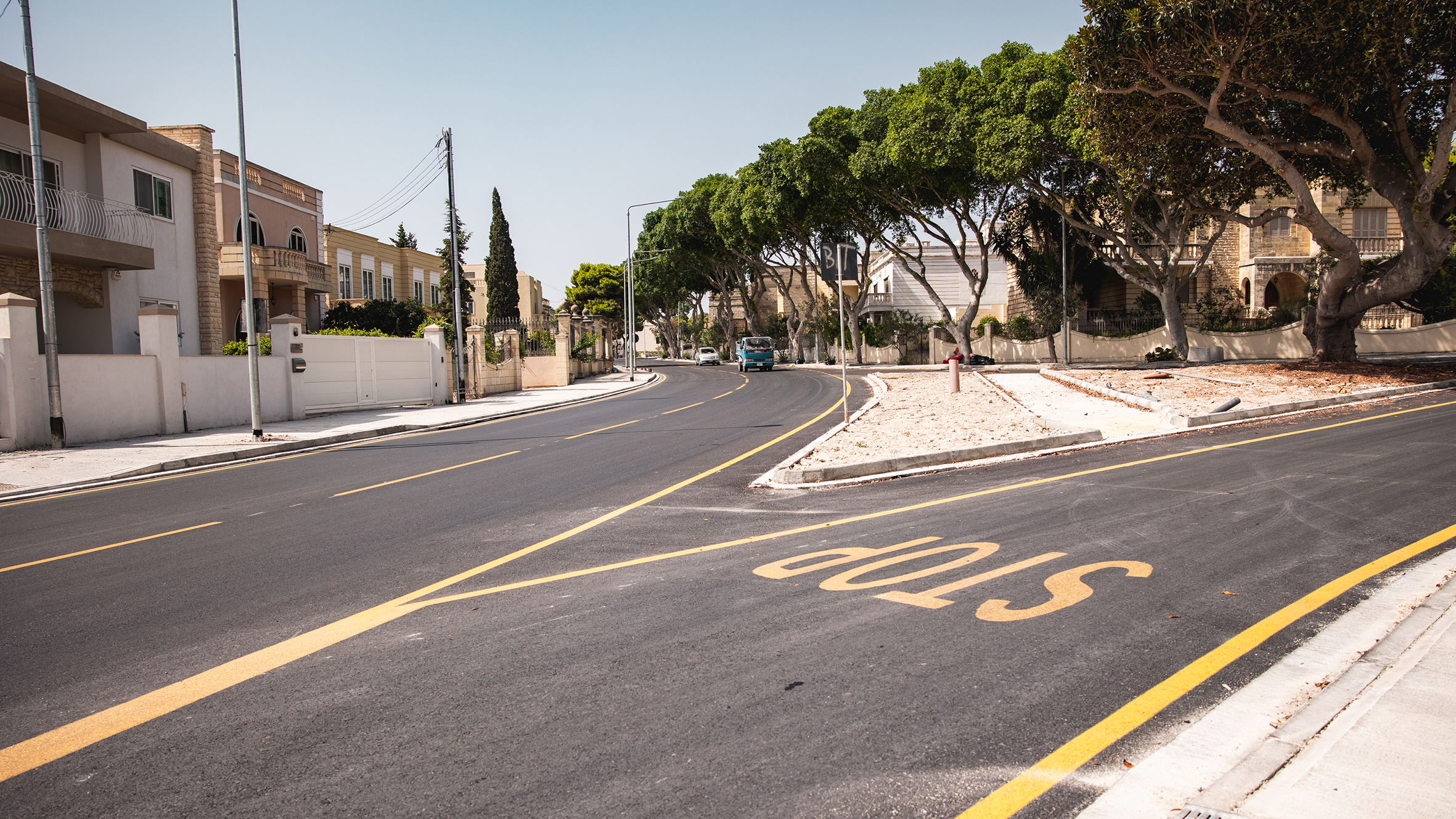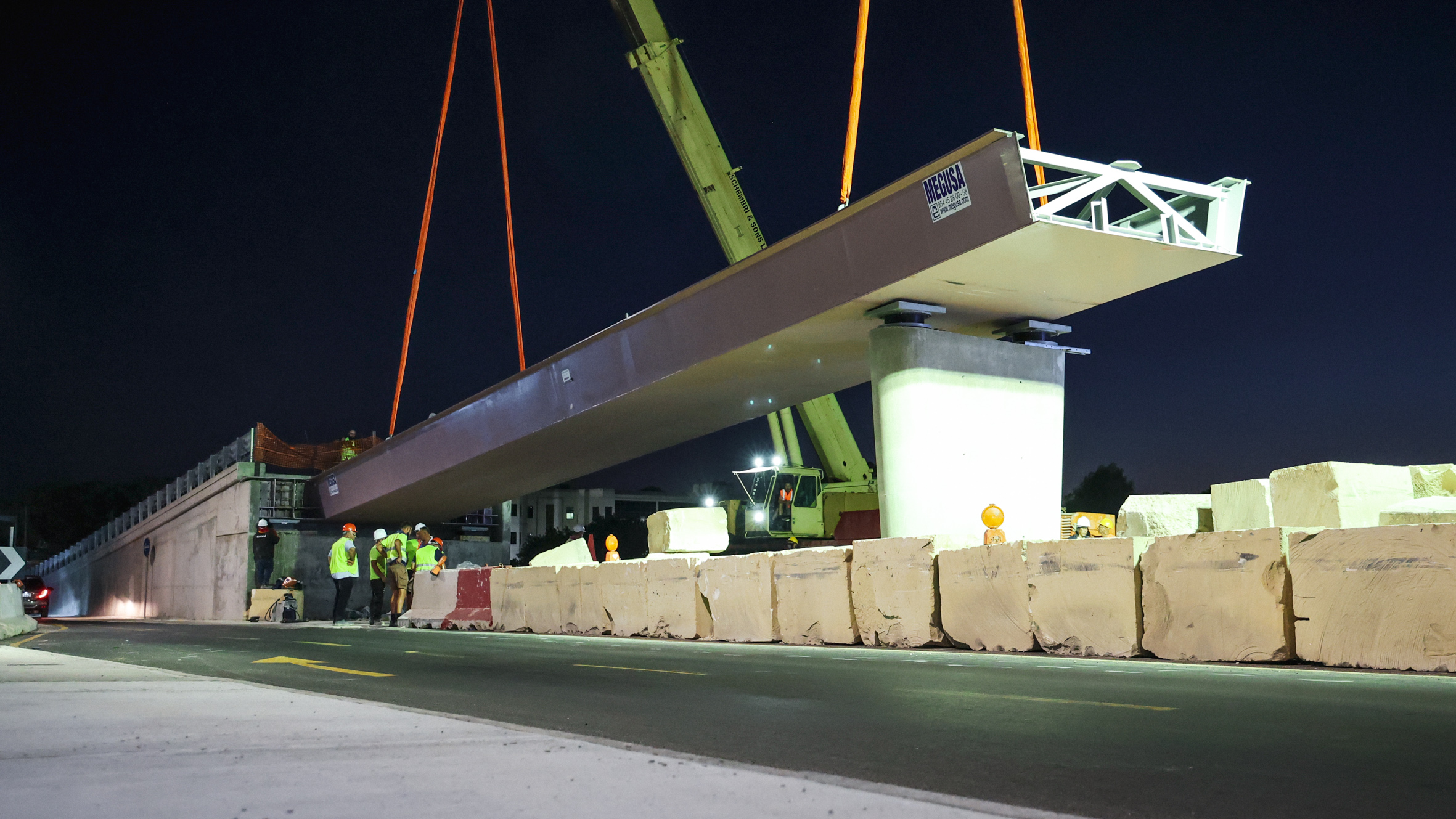
Laying of KTAIP flyover deck
Infrastructure Malta lifted in place the first of seven steel structures of the new flyover deck of the Kirkop Tunnels and Airport Intersection Project (KTAIP), which will offer a direct route from Luqa to the Kirkop Tunnels, on Tuesday night.
The steel superstructure of this 400-metre flyover weighing 330 tonnes was shipped to Malta last week from Seville. It was manufactured by Megusa, which has a history of 180 years and was responsible for the construction of similar structures and large bridges in Spain. Six other similar structures weighing 280 tonnes of the 225 metre flyover of Luqa Junction Project which is being built next to KTAIP, were also delivered. The two projects will reduce travel time by up to 74% in each direction along this route and will be co-financed by the European Union’s Connecting Europe Facility.
Between Sunday and Monday, the project contractors transported on site the first structures of the KTAIP flyover from the Malta Freeport, and last night started lifting them in place. During the past months, they built the abutments and five concrete columns which will support the KTAIP flyover, and its approach ramps.
The laying of the Gudja flyover steel structures will continue in the coming days. When the entire deck is joined, Infrastructure Malta will complete the last necessary works to form the flyover. The agency is anticipating the opening of the new flyover towards the end of the year. In the meantime, the installation of the Luqa flyover structures is also expected to begin by the end of August.
Infrastructure Malta has completed 60% of the KTAIP. This €18 million investment will provide quicker and safer connections to Luqa, Gudja, Birzebbuga, Kirkop, Mqabba, Qrendi, Zurrieq, Safi and other nearby areas. The project also includes the redevelopment of the Gudja roundabout to introduce a new underpass to Birzebbuga and new facilities for alternative modes of travel. It will also improve access to the Malta International Airport and to the Malta Freeport, two strategic locations for many economic sectors.
The Gudja roundabout is a crossroads of several arterial roads, including L-Avjazzjoni Avenue, to and from Luqa, Marsa and Qormi; Dawret il-Gudja Road, towards Gudja and Ghaxaq; Hal Far Road, to and from Hal Far, the Freeport and Birzebbuga; and L-Ewwel Titjira Road, which links the roundabout with the Kirkop Tunnels. It also includes Il-Karwija Road, leading to the Airport and Gudja.
Works of the KTAIP started with the construction of the foundations for the new projects roads, over 300 metres of retaining and boundary walls and 330 metres of new footpaths. More footpaths and cycle lanes will be ready in the coming months. During the past months, workers have completed 70% of the excavation works for the project’s new 200-metre roundabout underpass and its two 120-metre approach ramps. They also built some of the tunnel walls and roofed a good part of the underpass which will have four lanes, two in each direction, and is expected to open by the end of the year. The whole project will be completed in the first quarter of next year.
The cut-and-cover underpass will create a direct, safer link between the southbound and northbound carriageways of L-Avjazzjoni Avenue and Hal Far Road. It will allow road users, including heavy vehicles, travelling to and from Birzebbuga, the Freeport and the Hal Far Industrial Zone, to bypass the roundabout. 
At grade, Infrastructure Malta is rebuilding the existing roundabout and its bypass lanes in an improved design to facilitate access to and from Gudja, Ghaxaq and the Airport. The third level of the intersection includes the new flyover bridging the southbound carriageway of L-Avjazzjoni Avenue with L-Ewwel Titjira Road, towards the Kirkop Tunnels. Commuters heading to Kirkop, Mqabba, Qrendi, Zurrieq and Safi will no longer need to enter the roundabout to reach the Kirkop Tunnels.
The project will also overhaul the area’s underground services networks, including 10 kilometres of new electricity cables, Internet and other telecommunication services cable ducts, water mains, sewers and stormwater pipelines.


